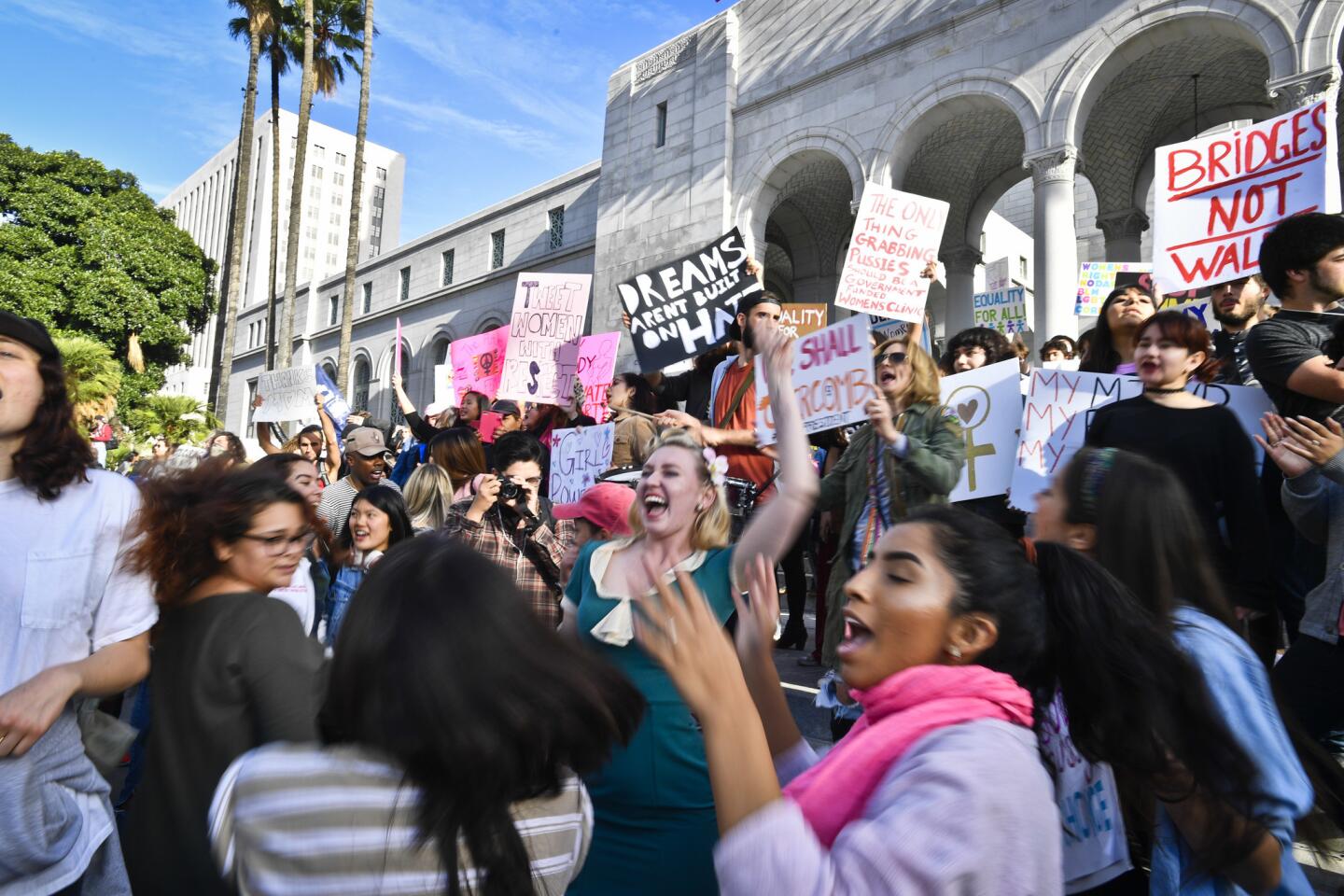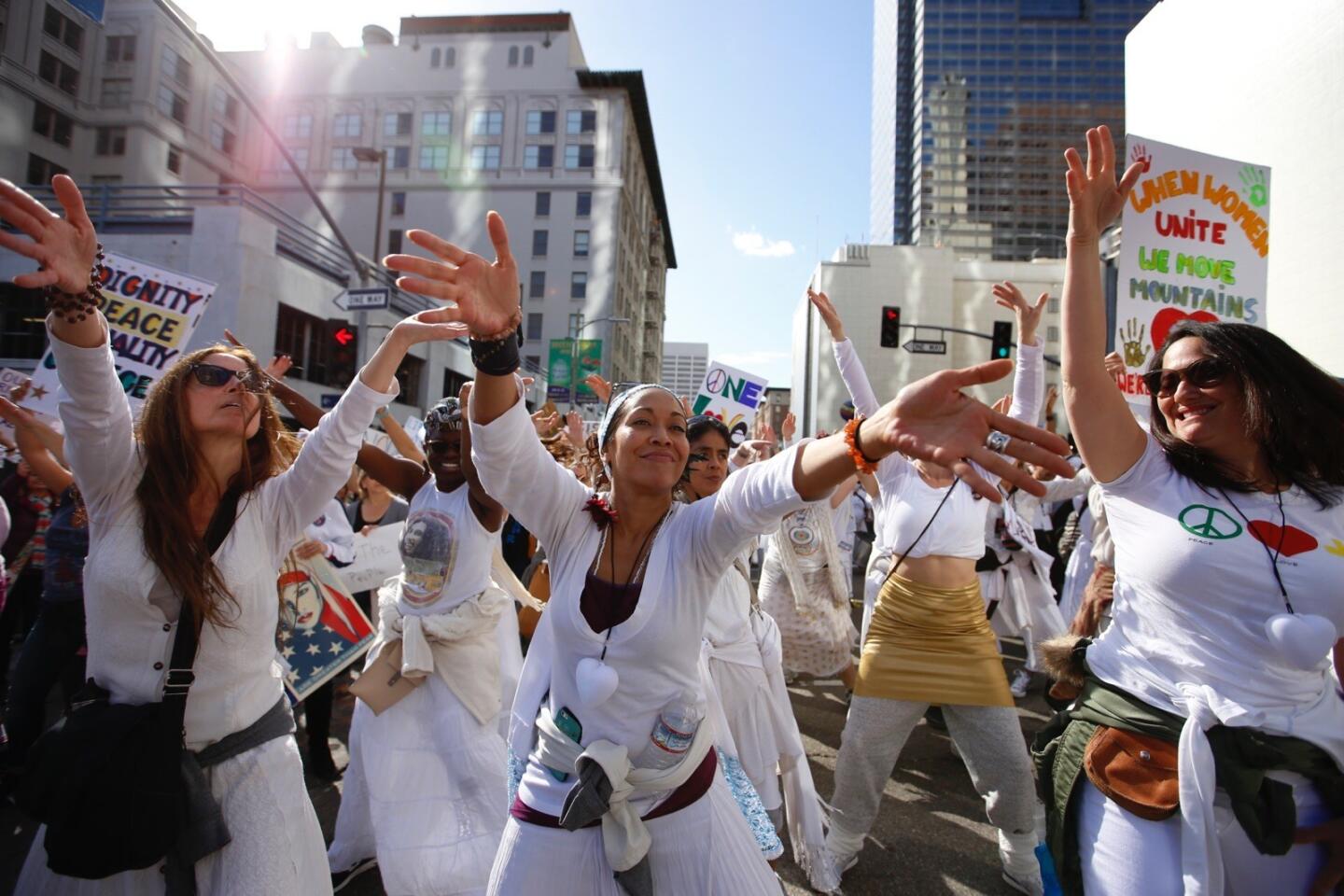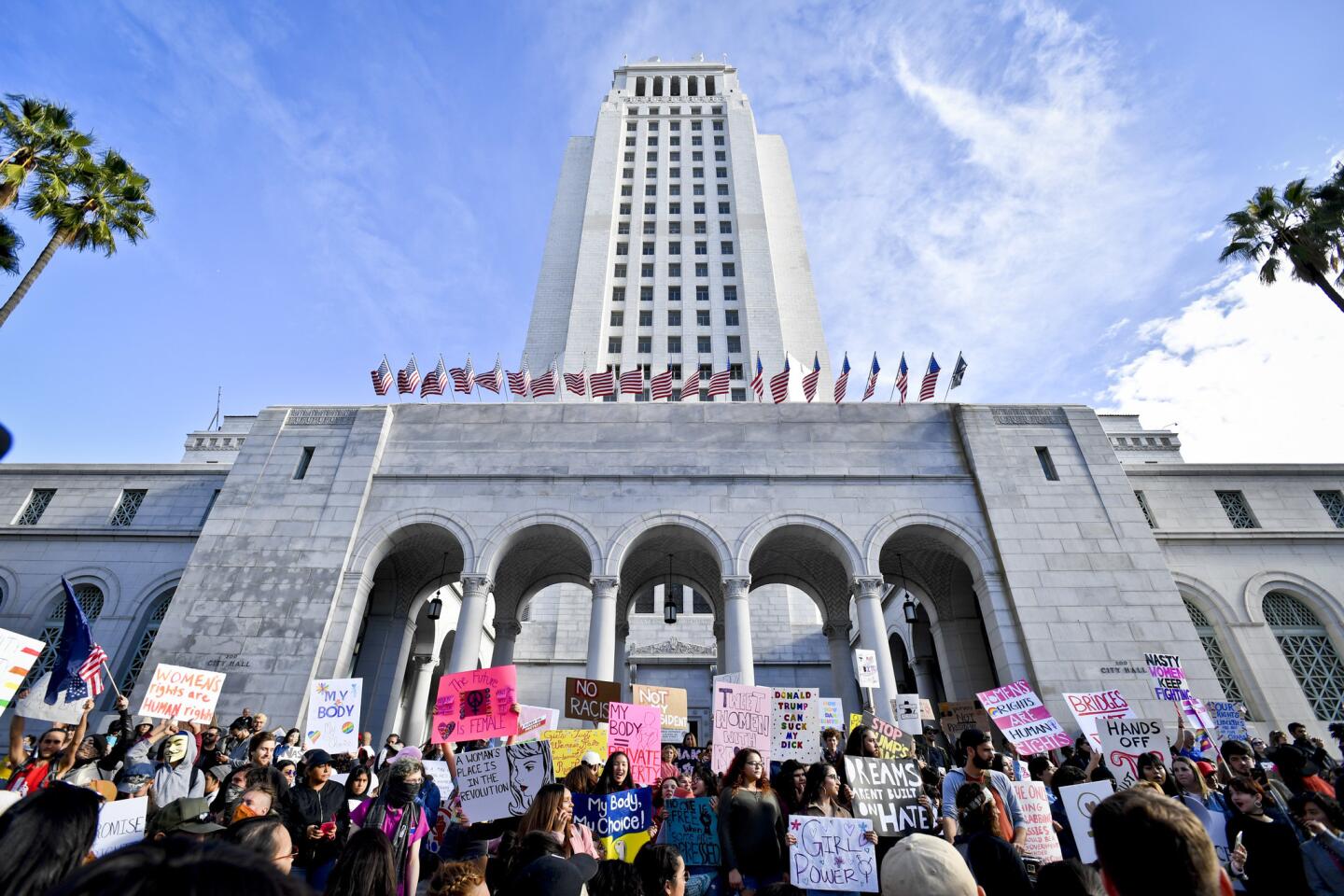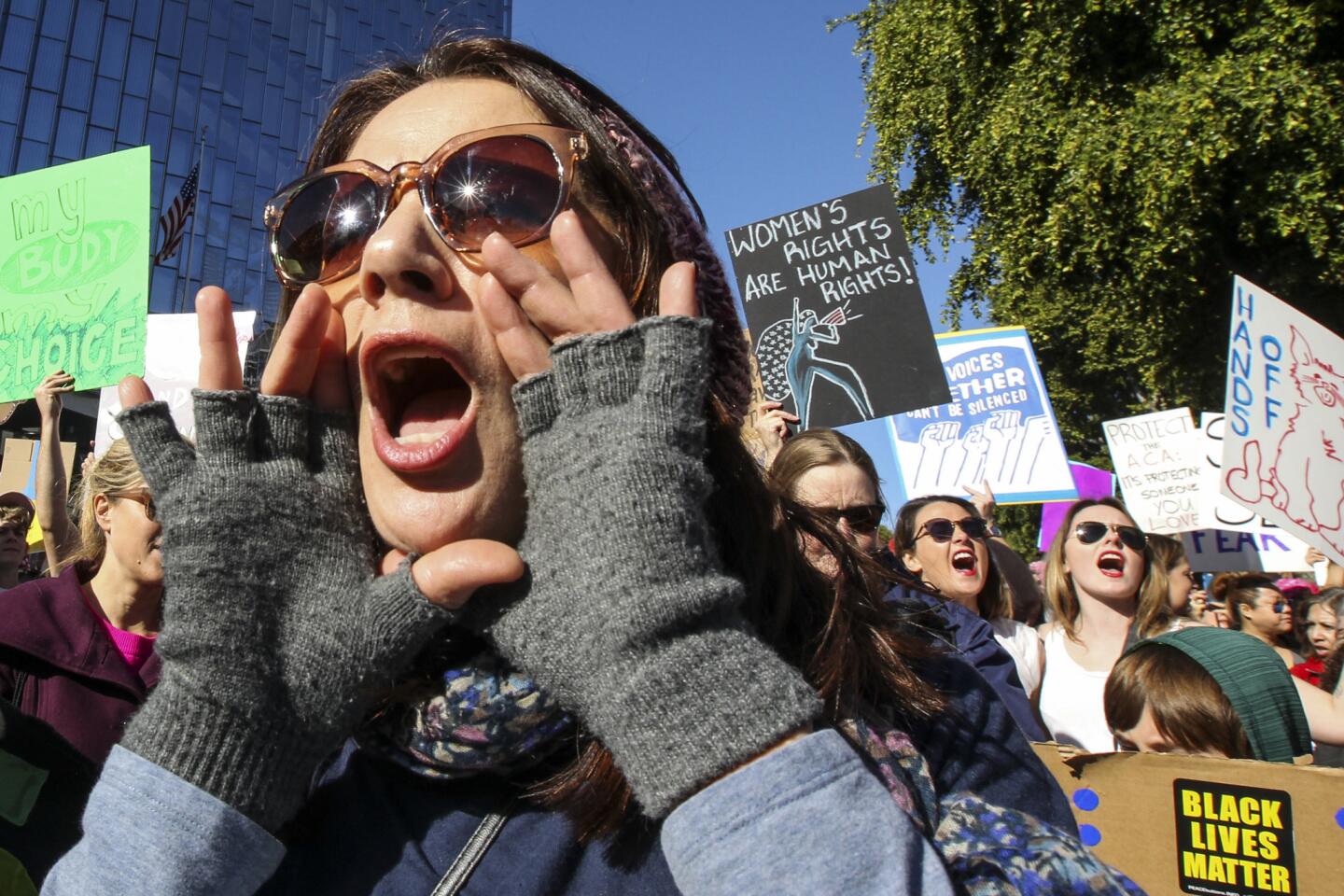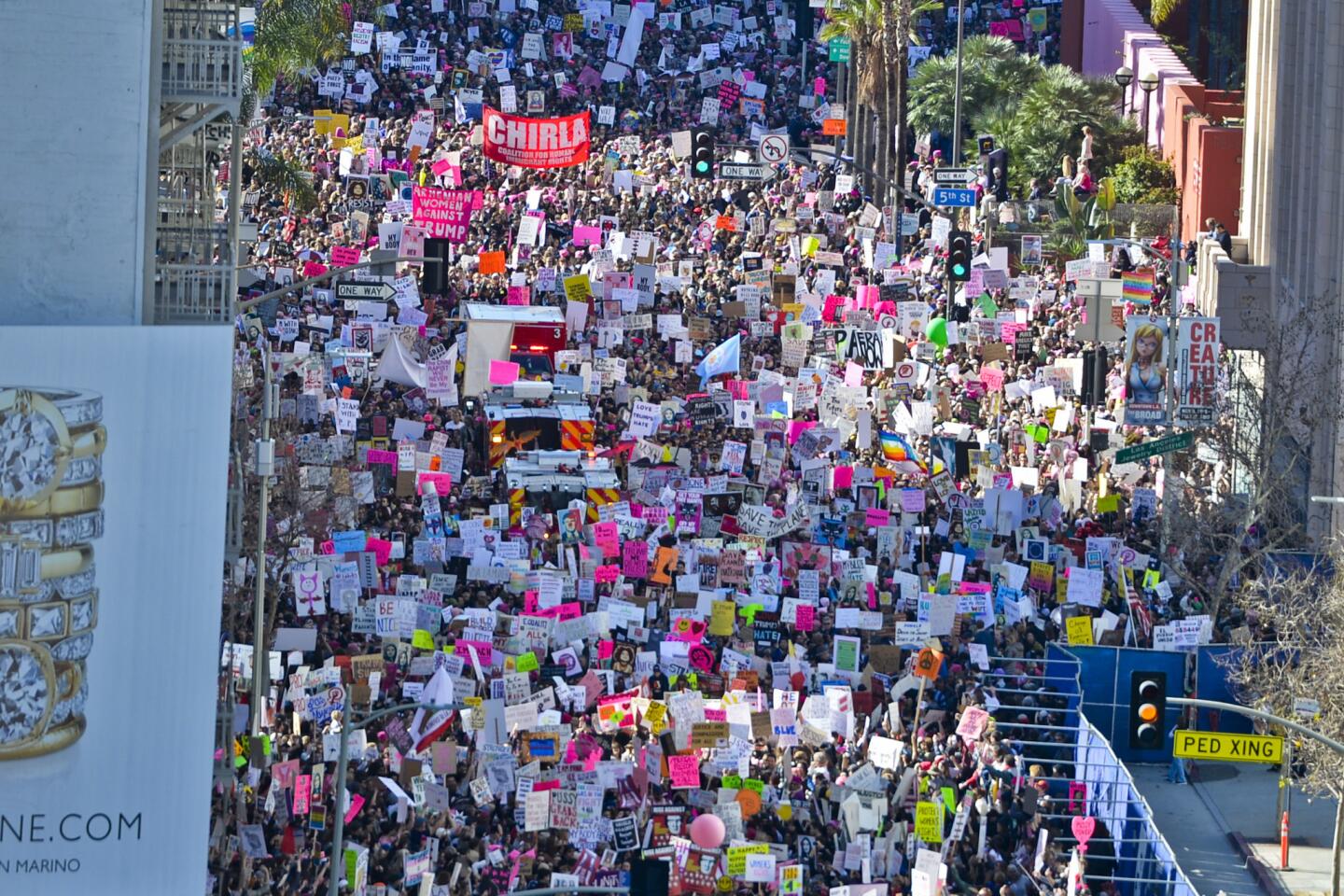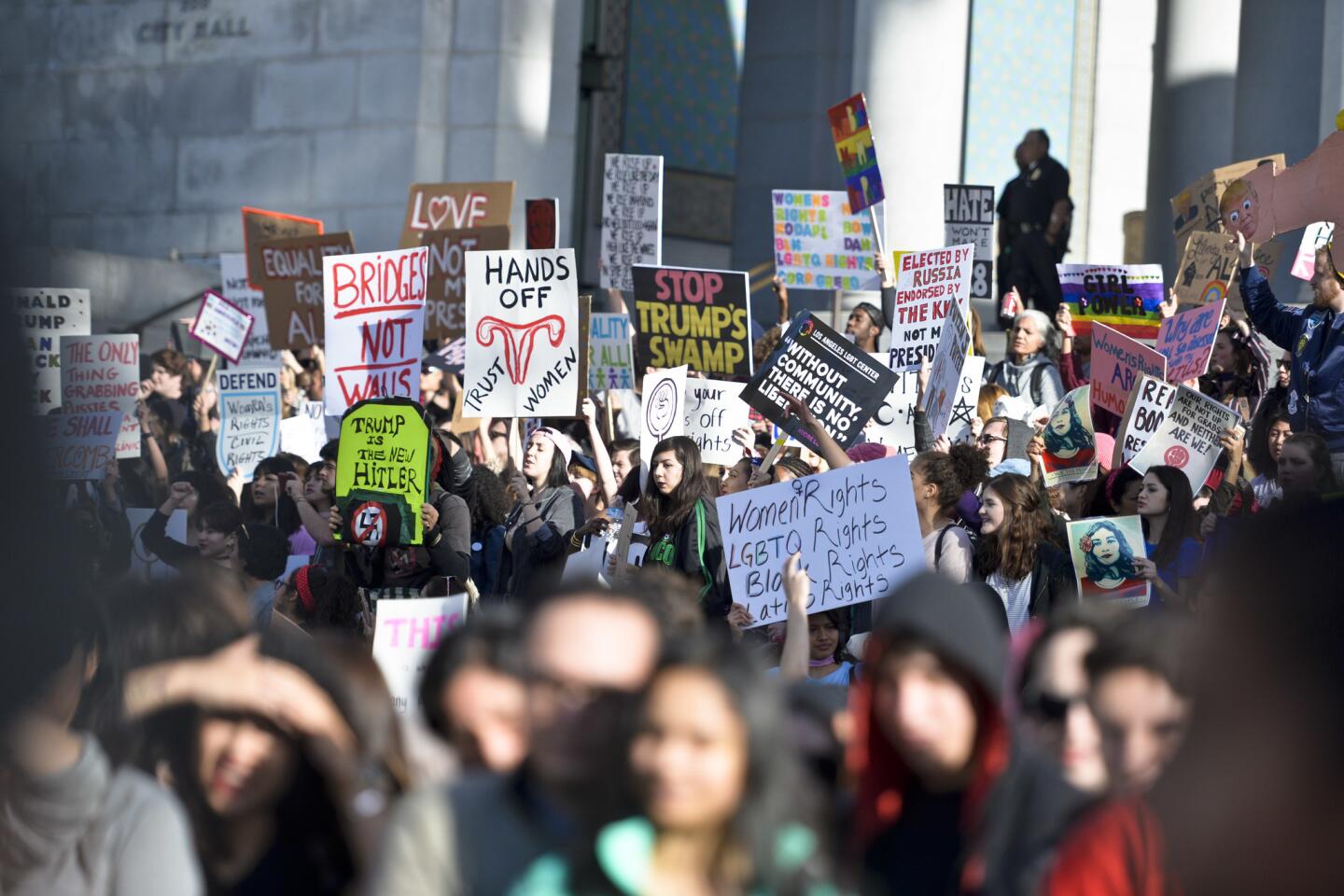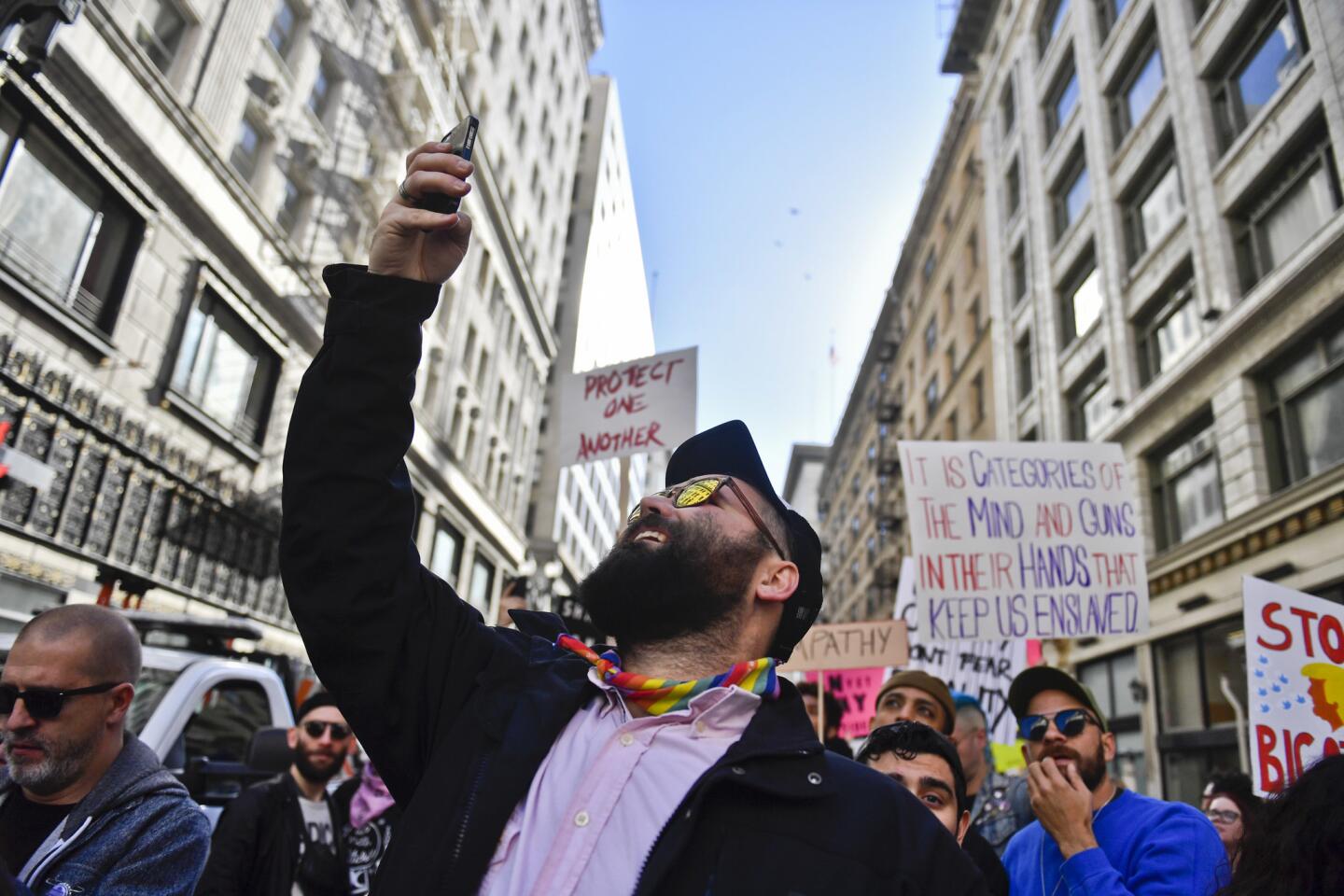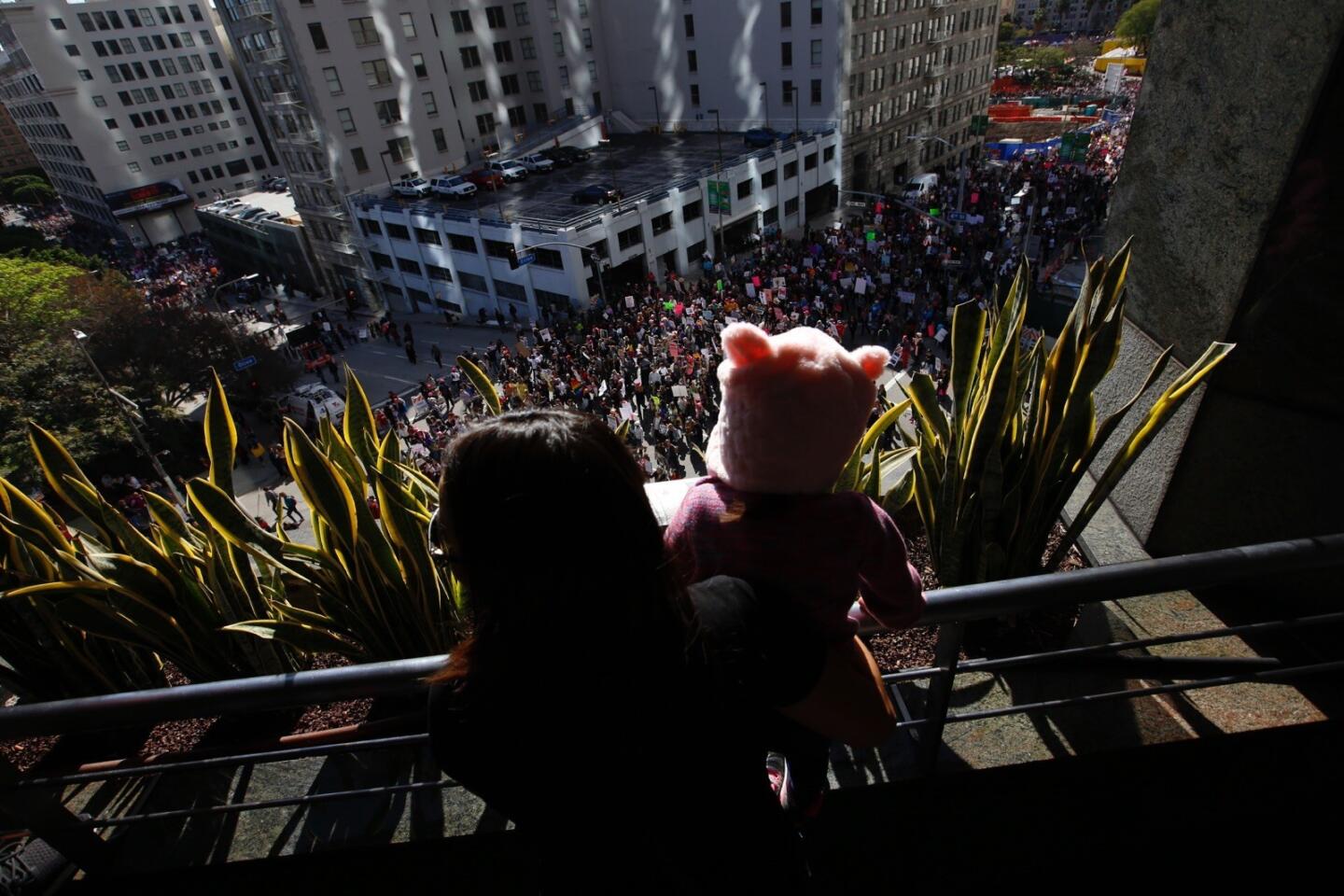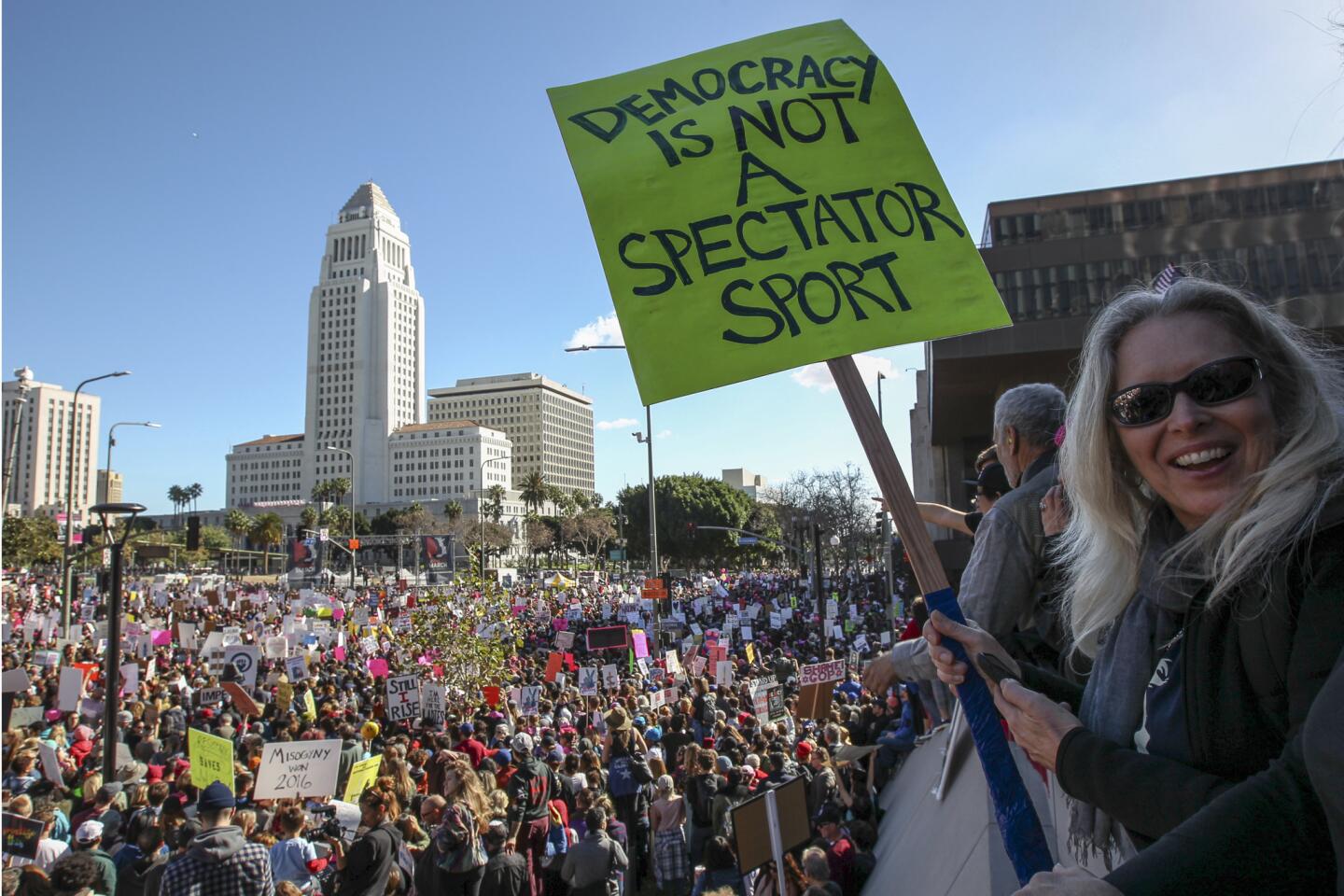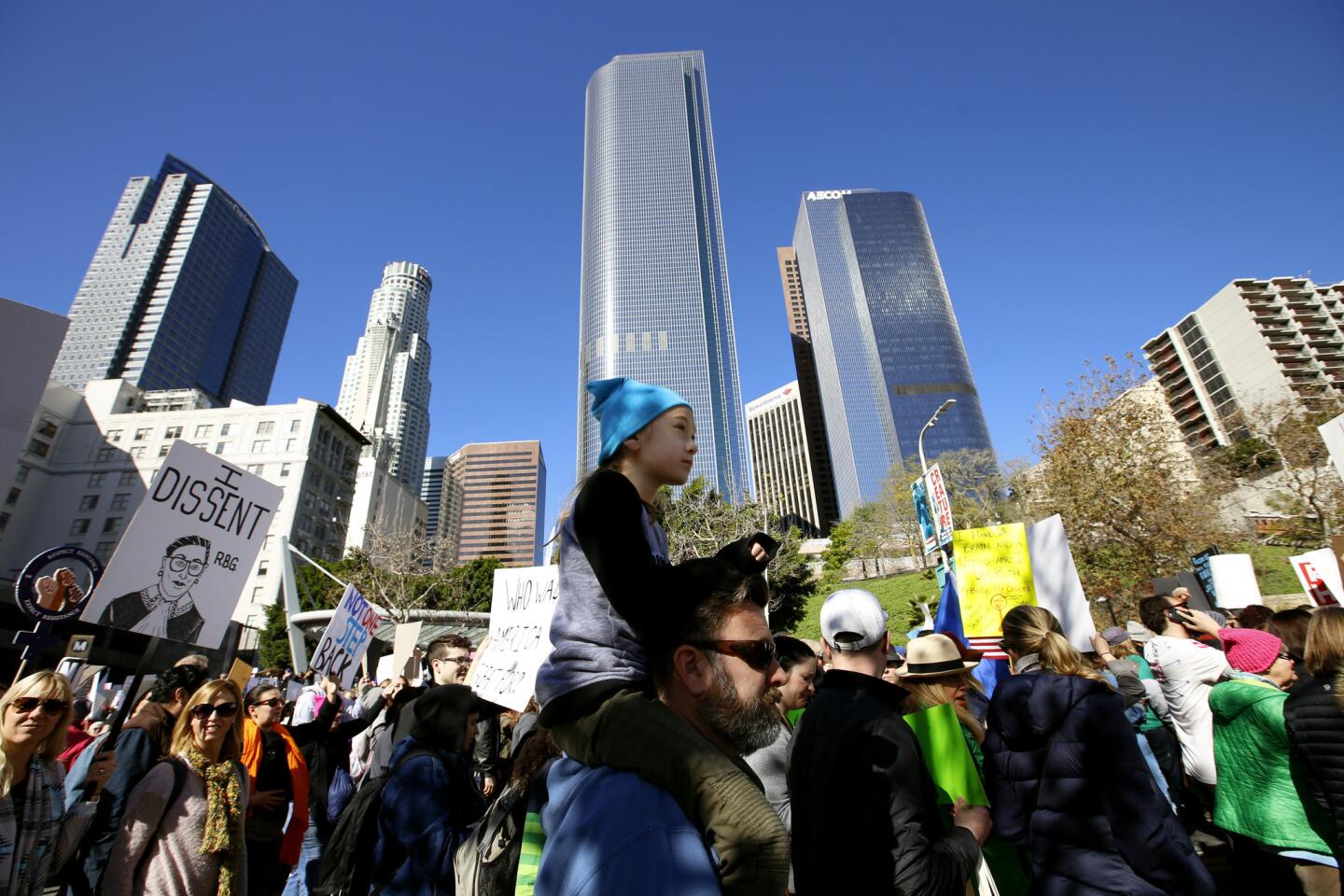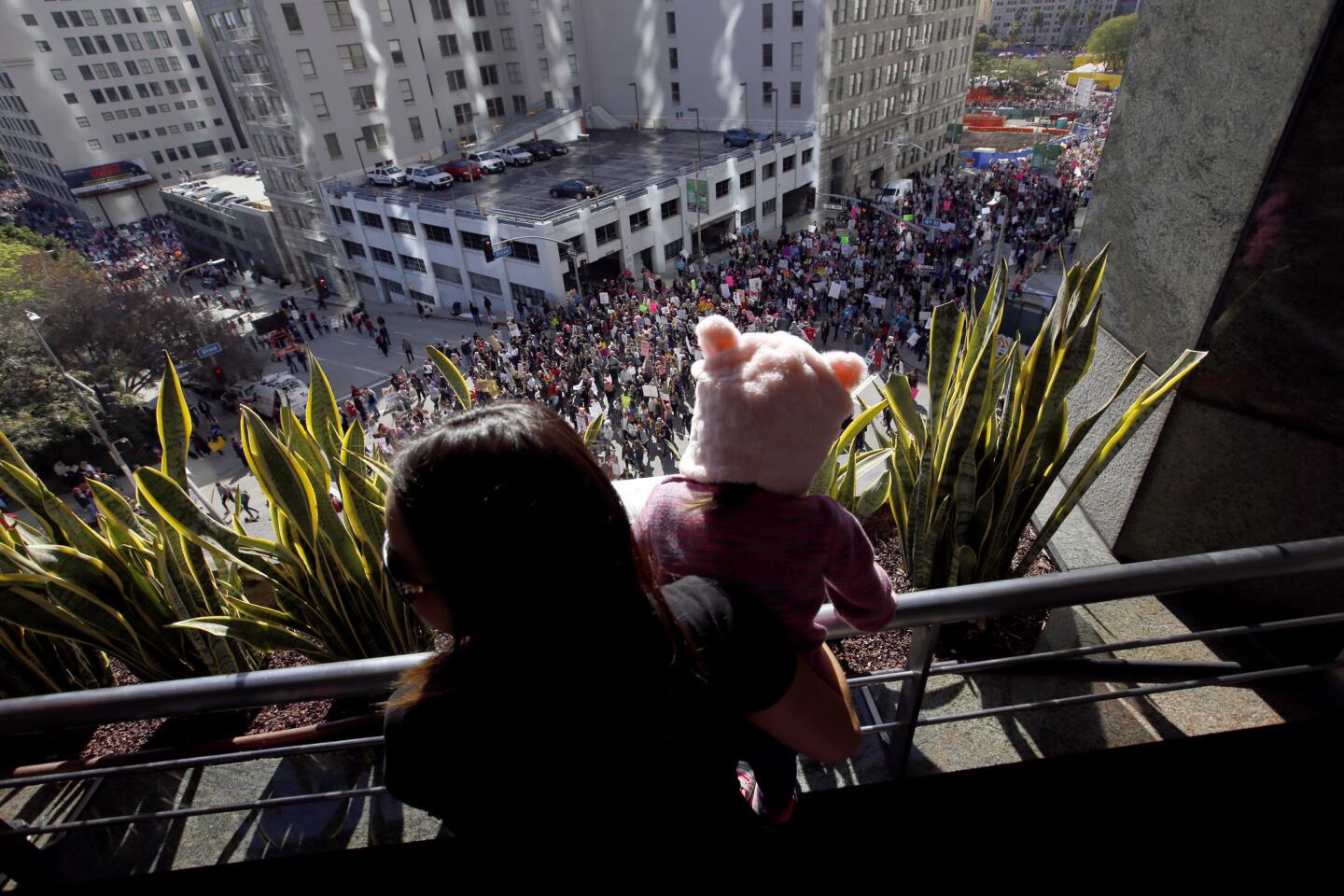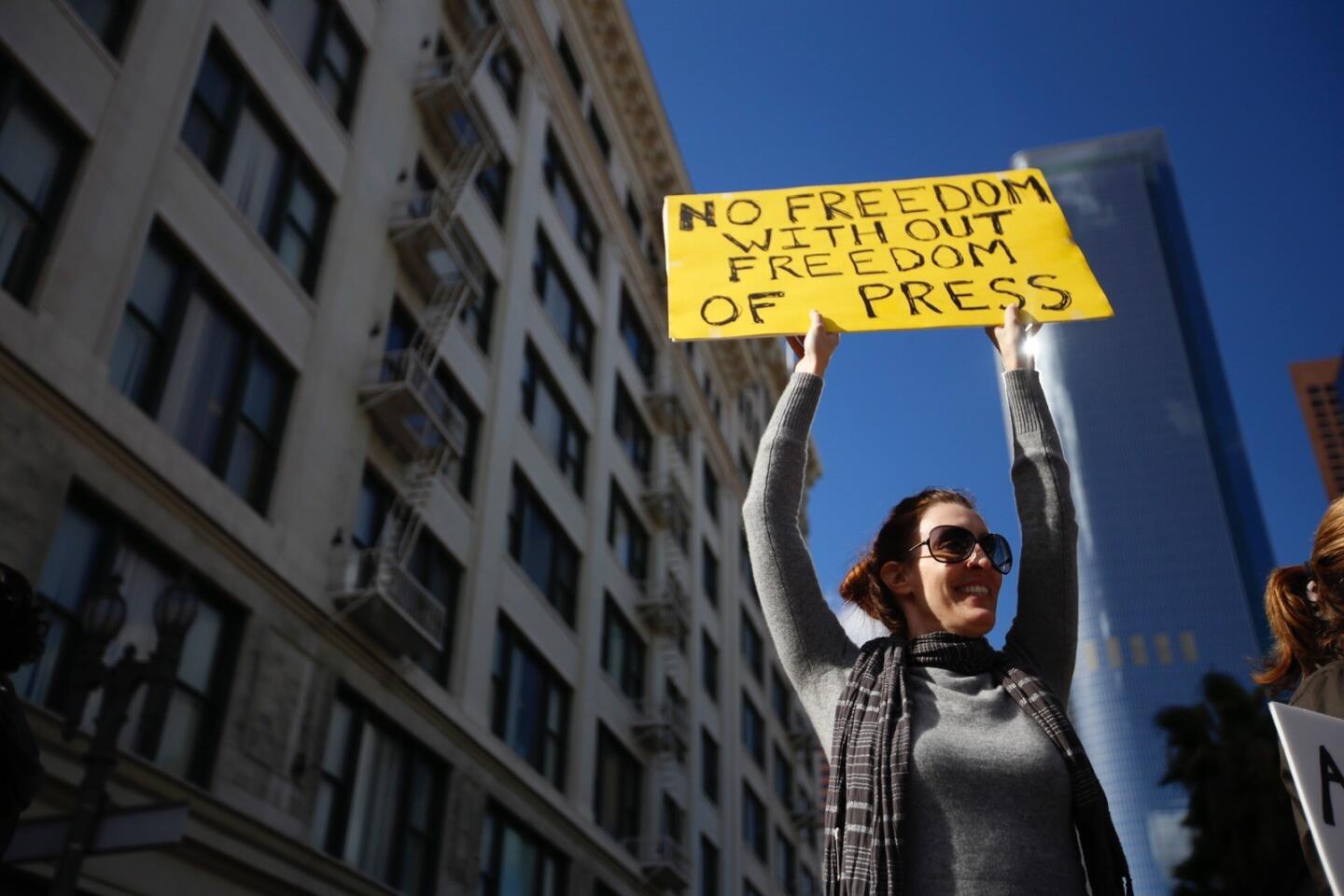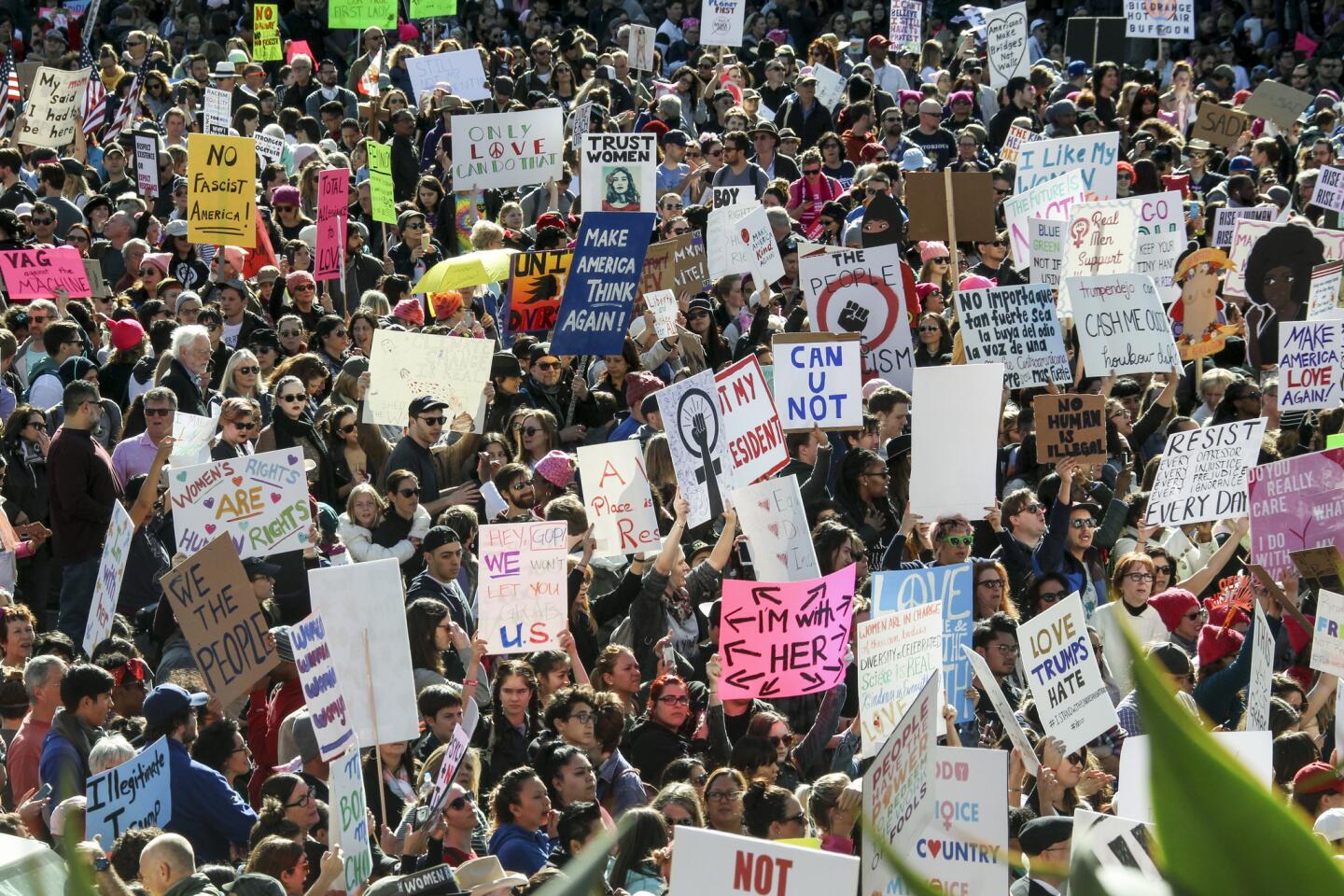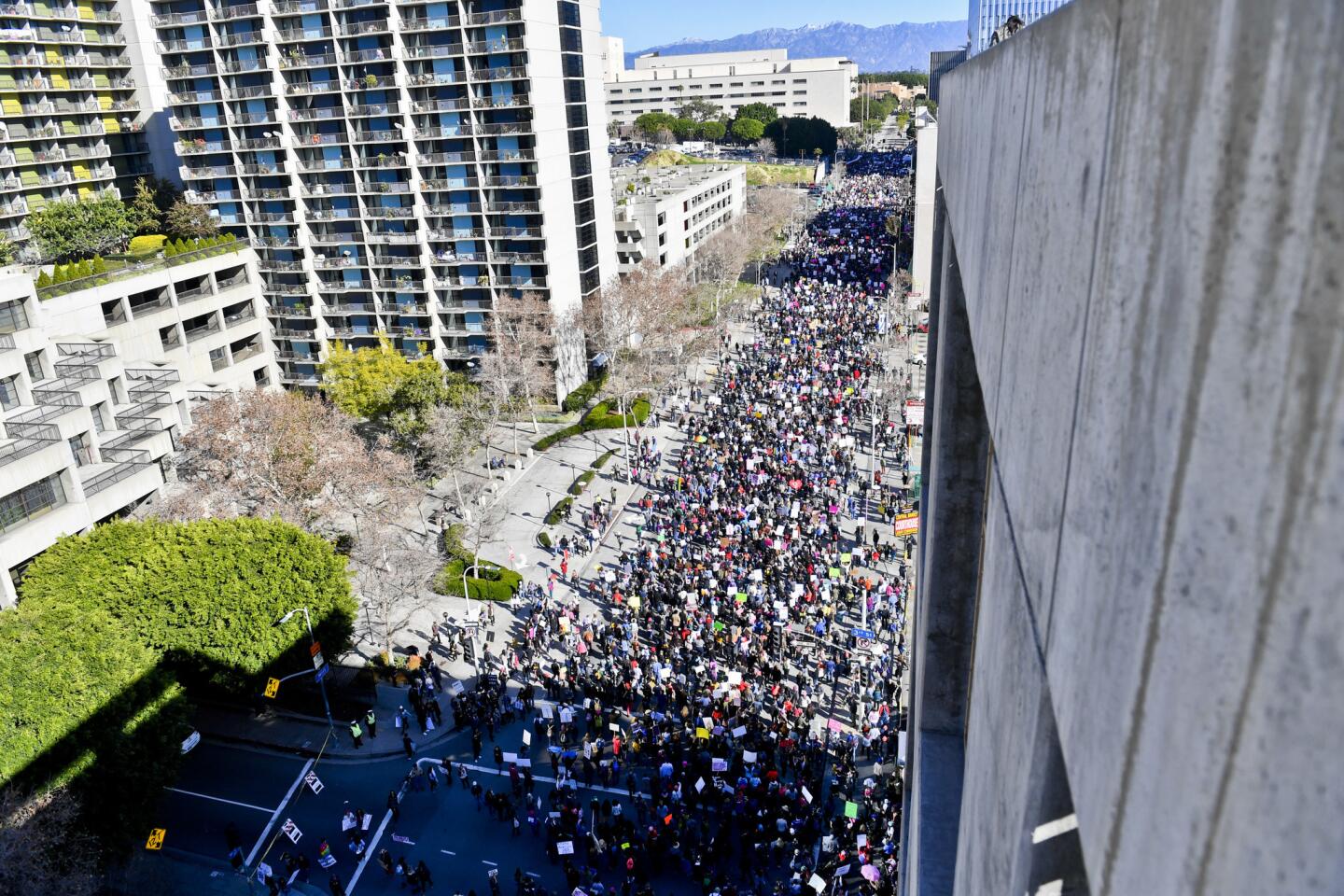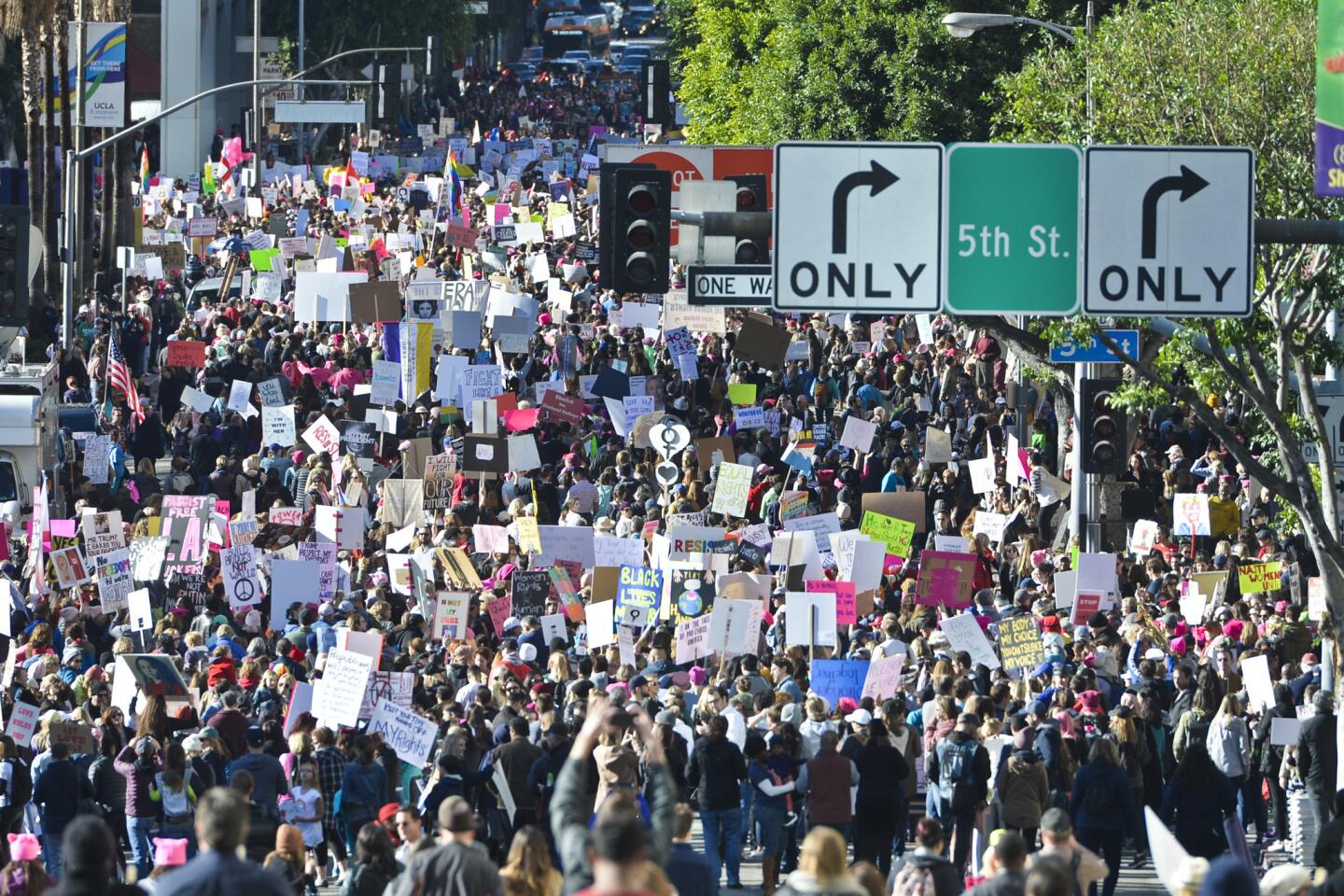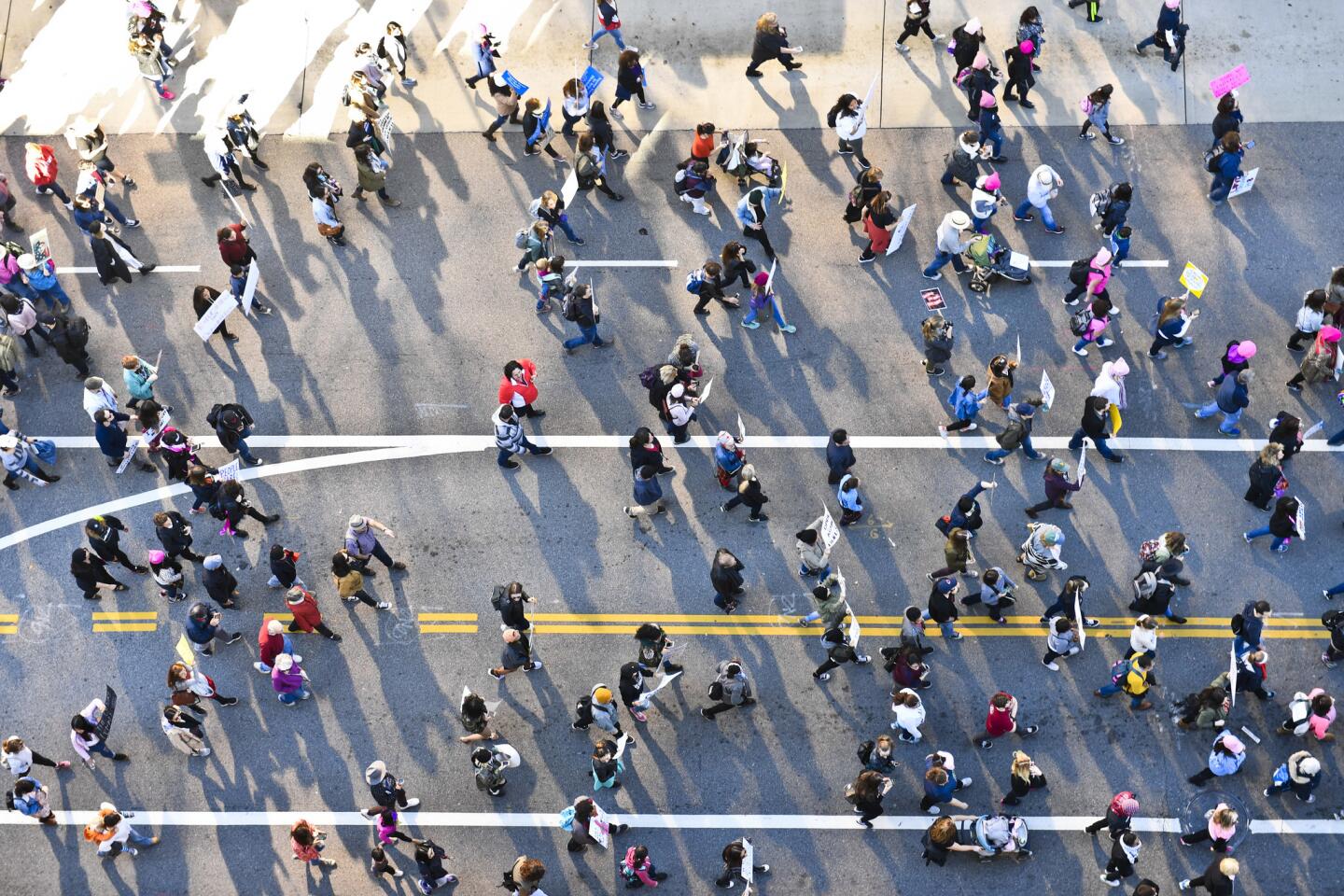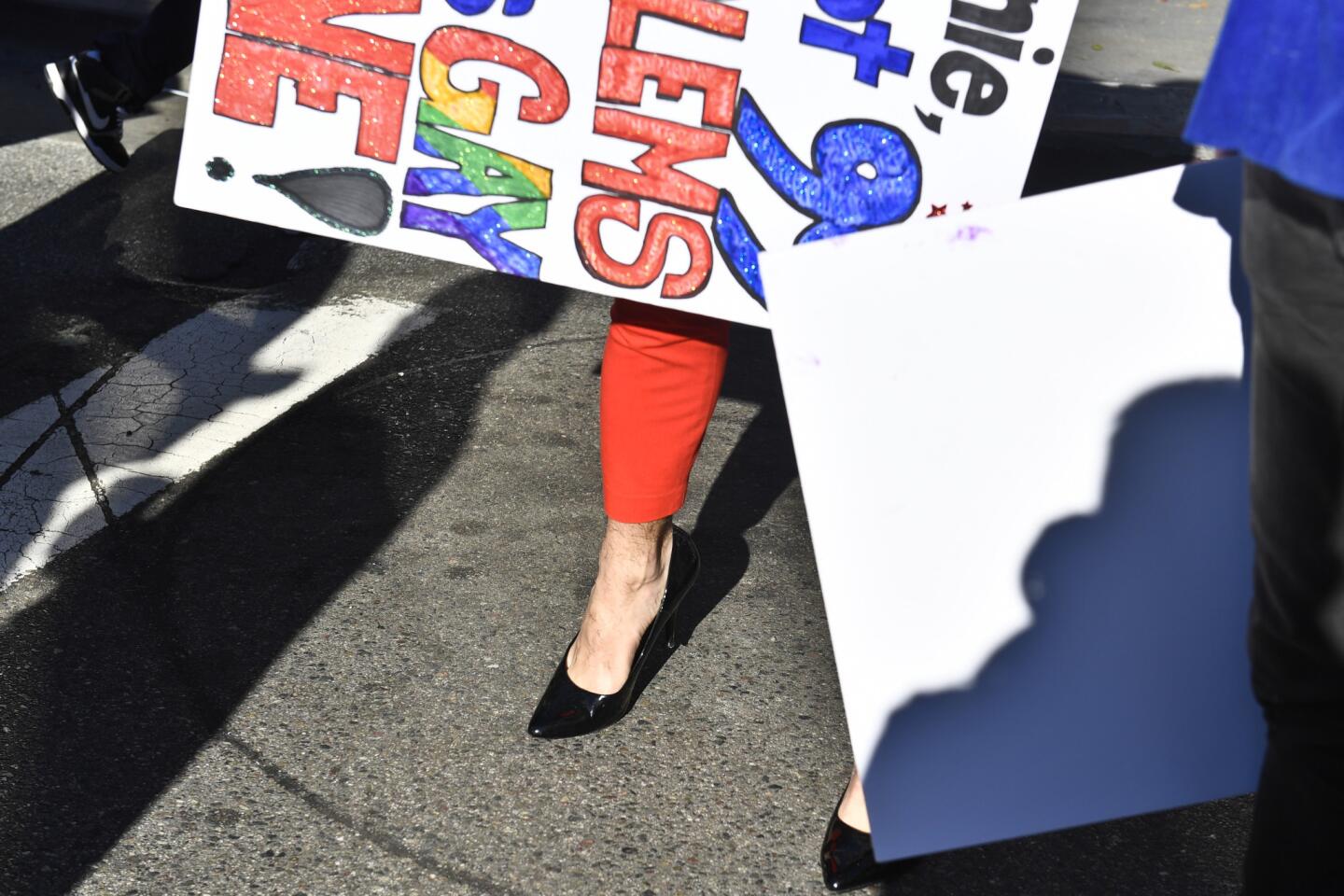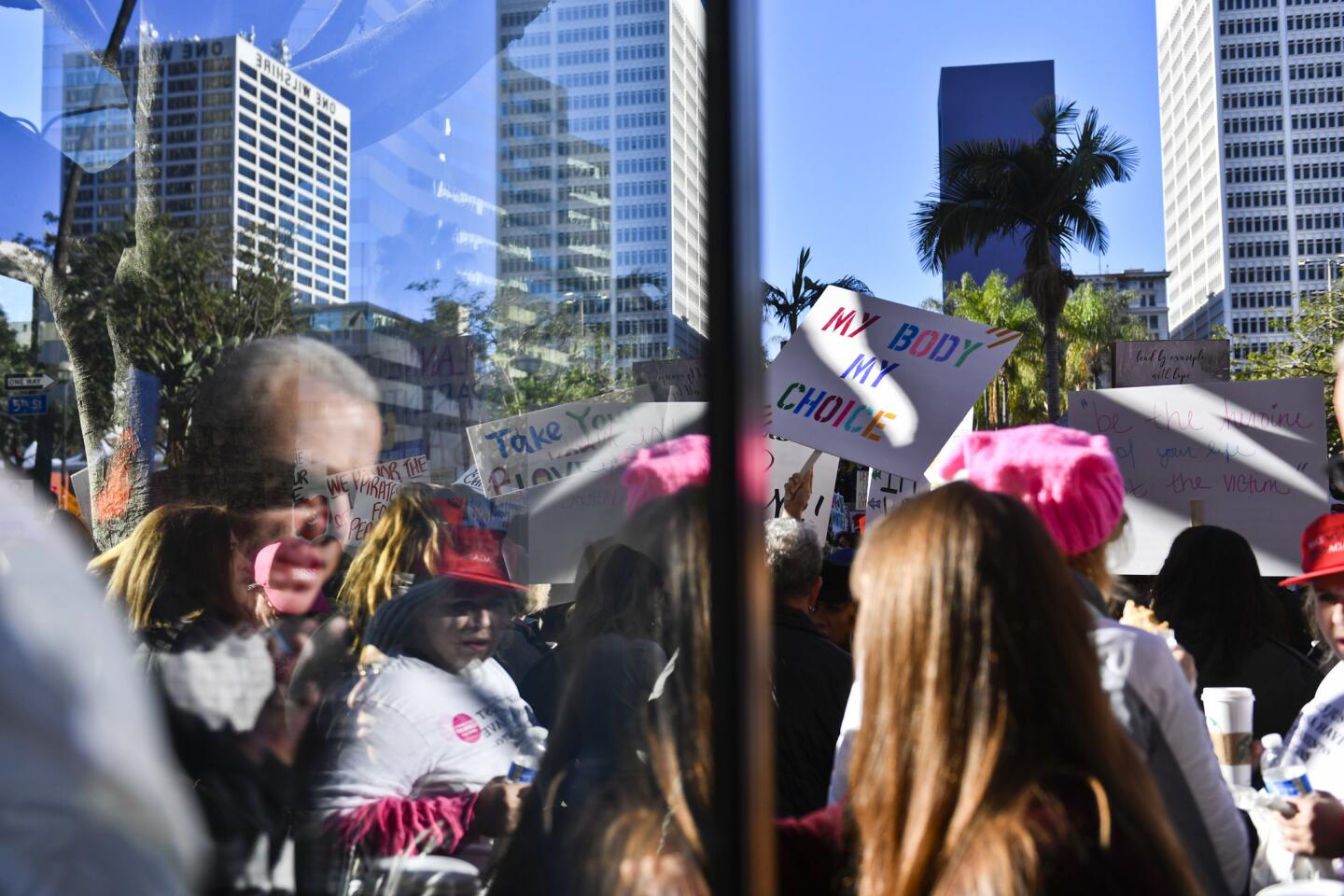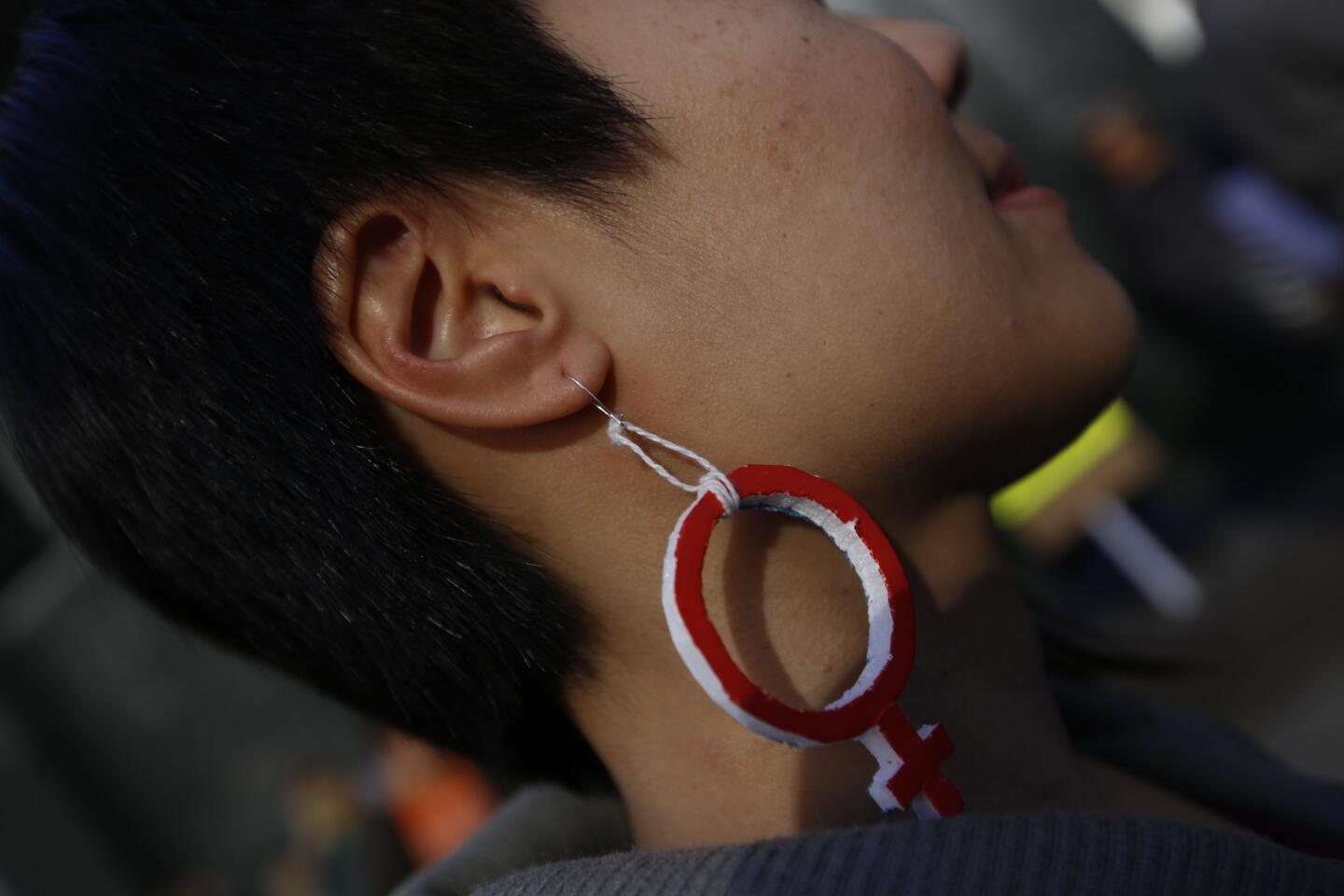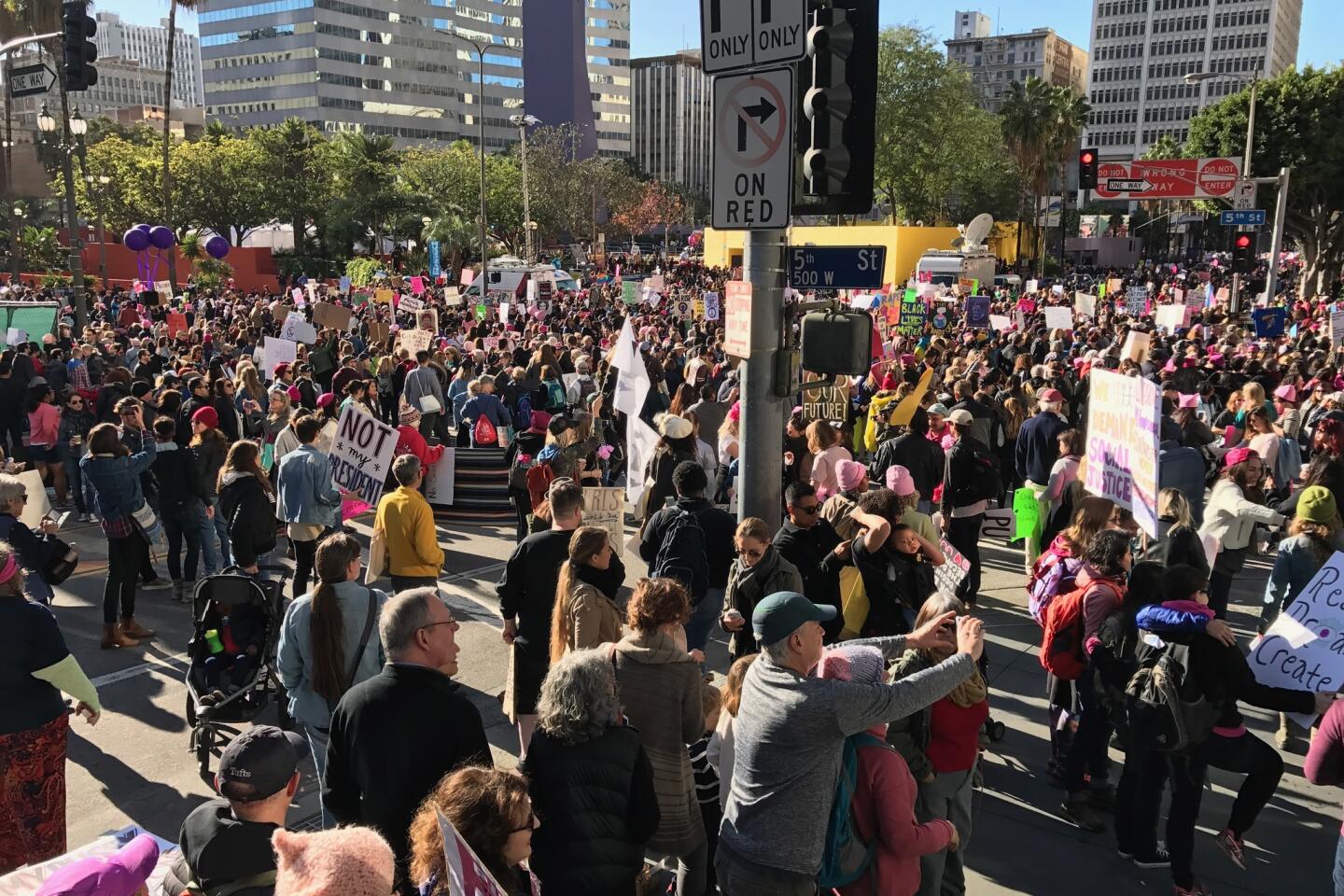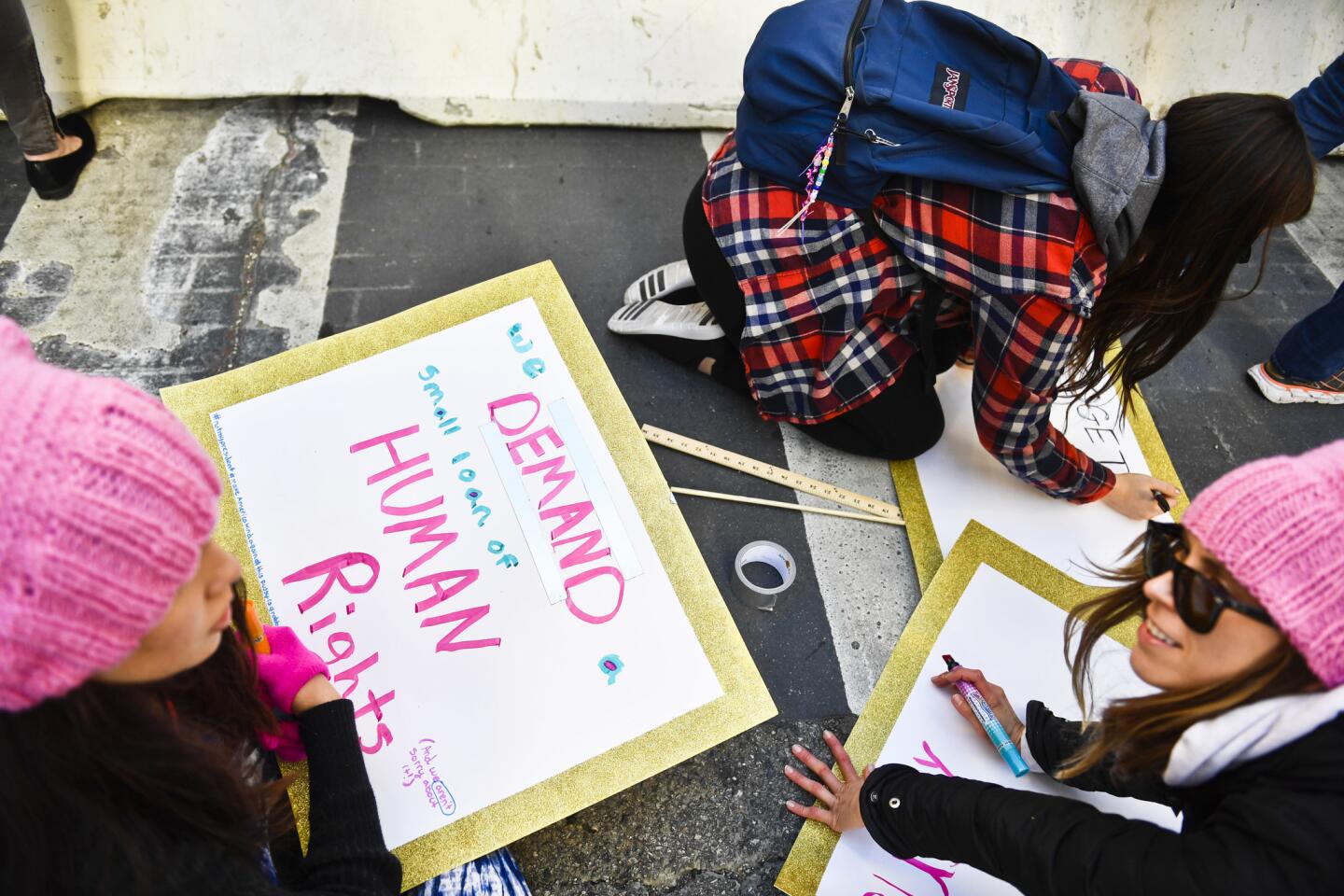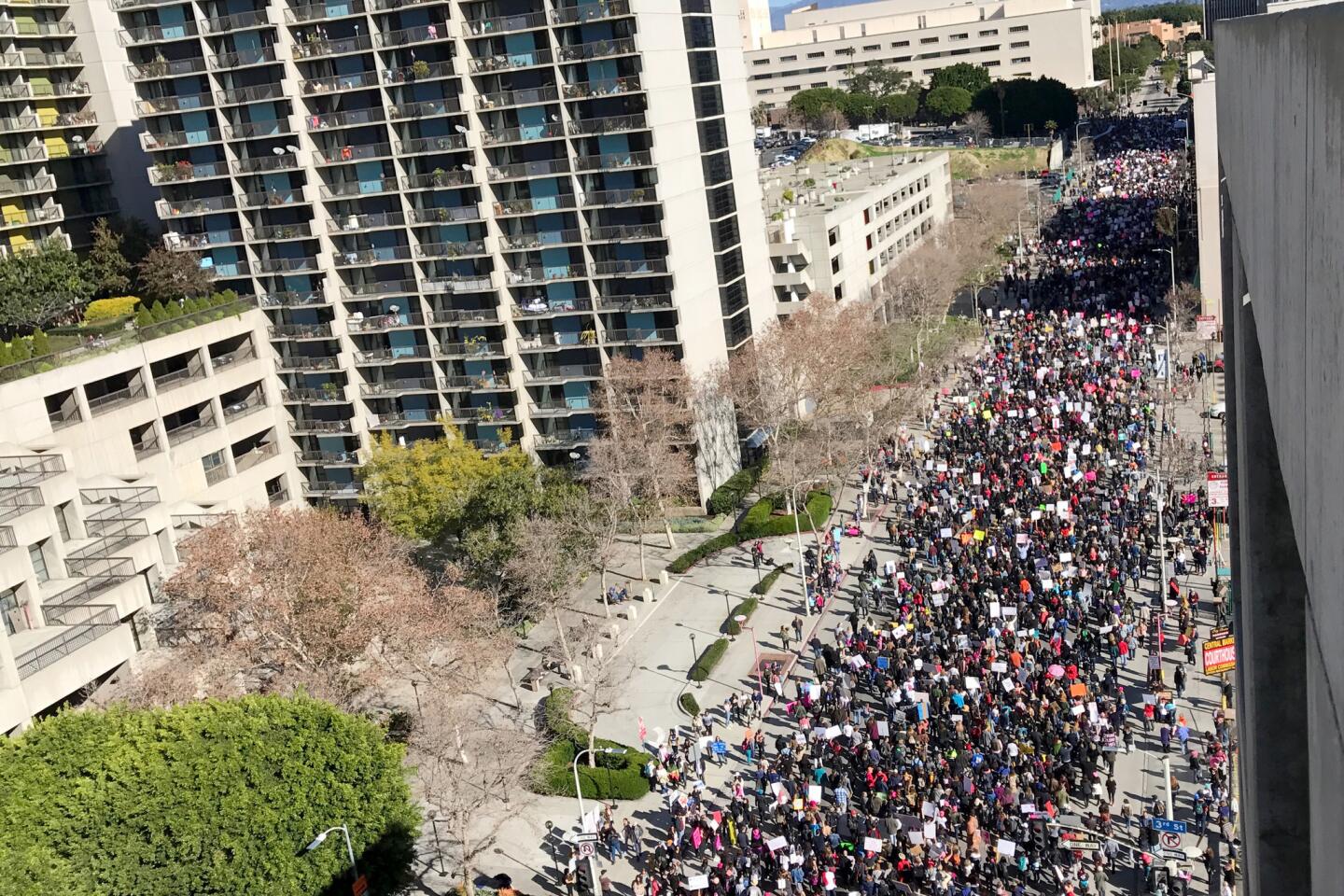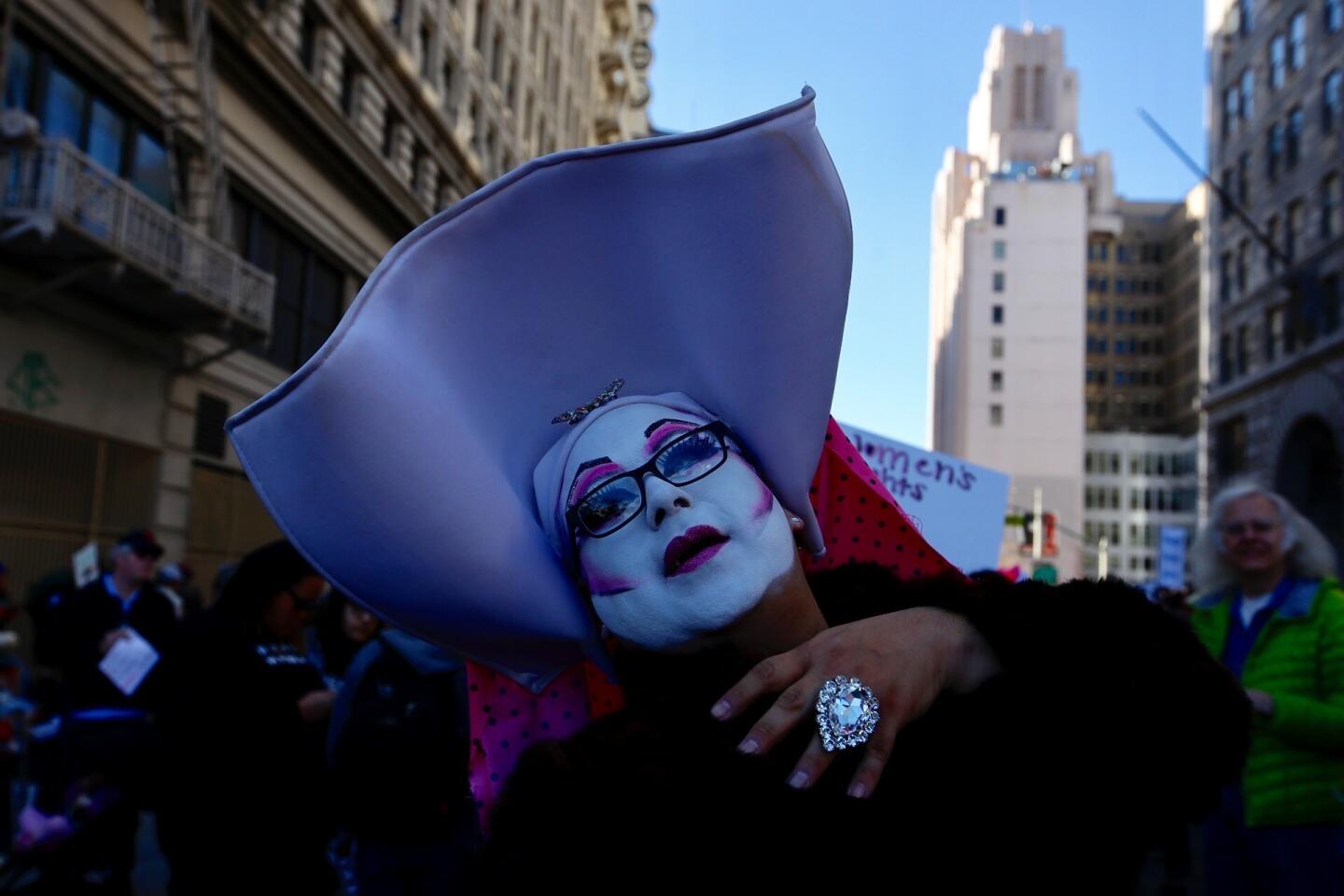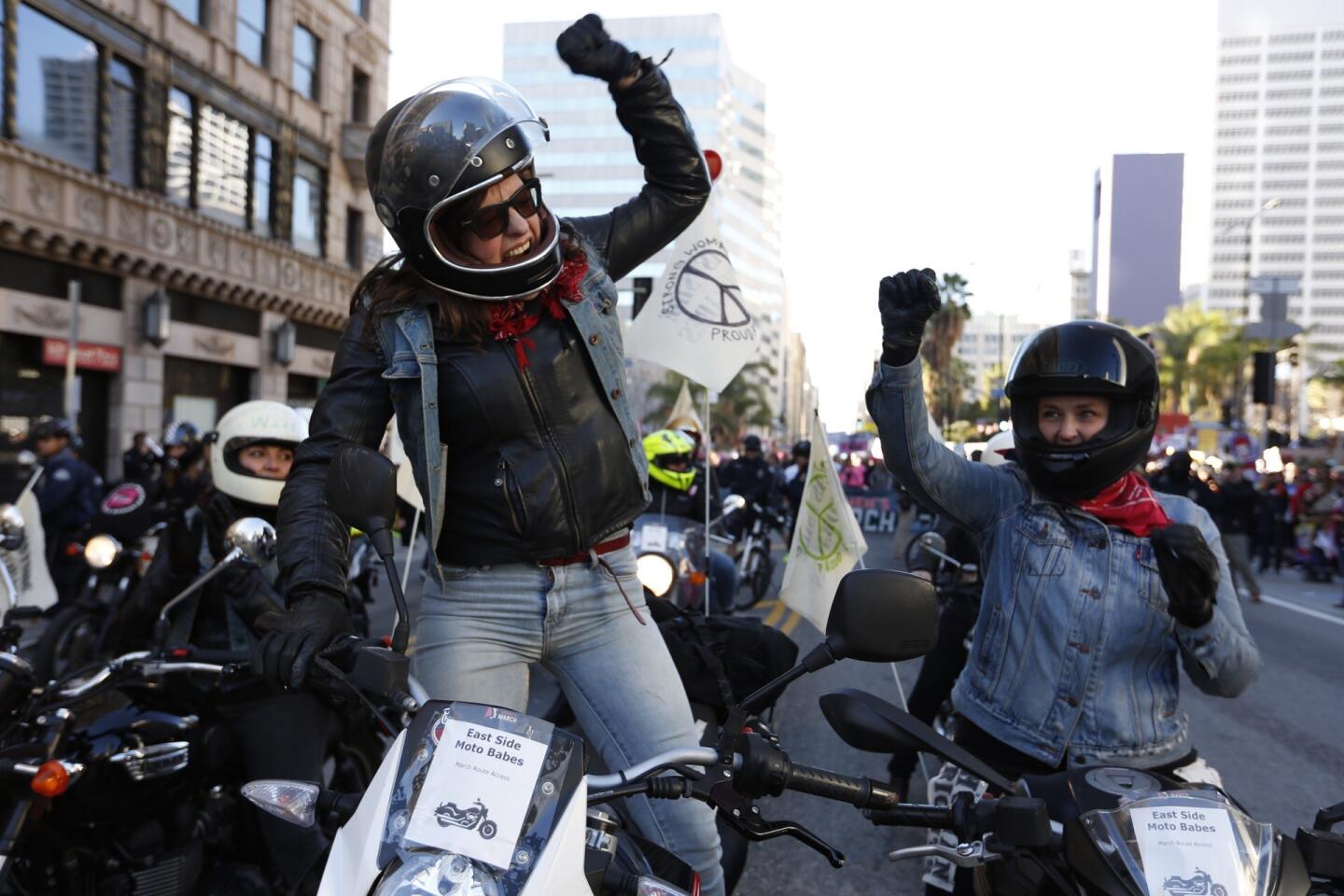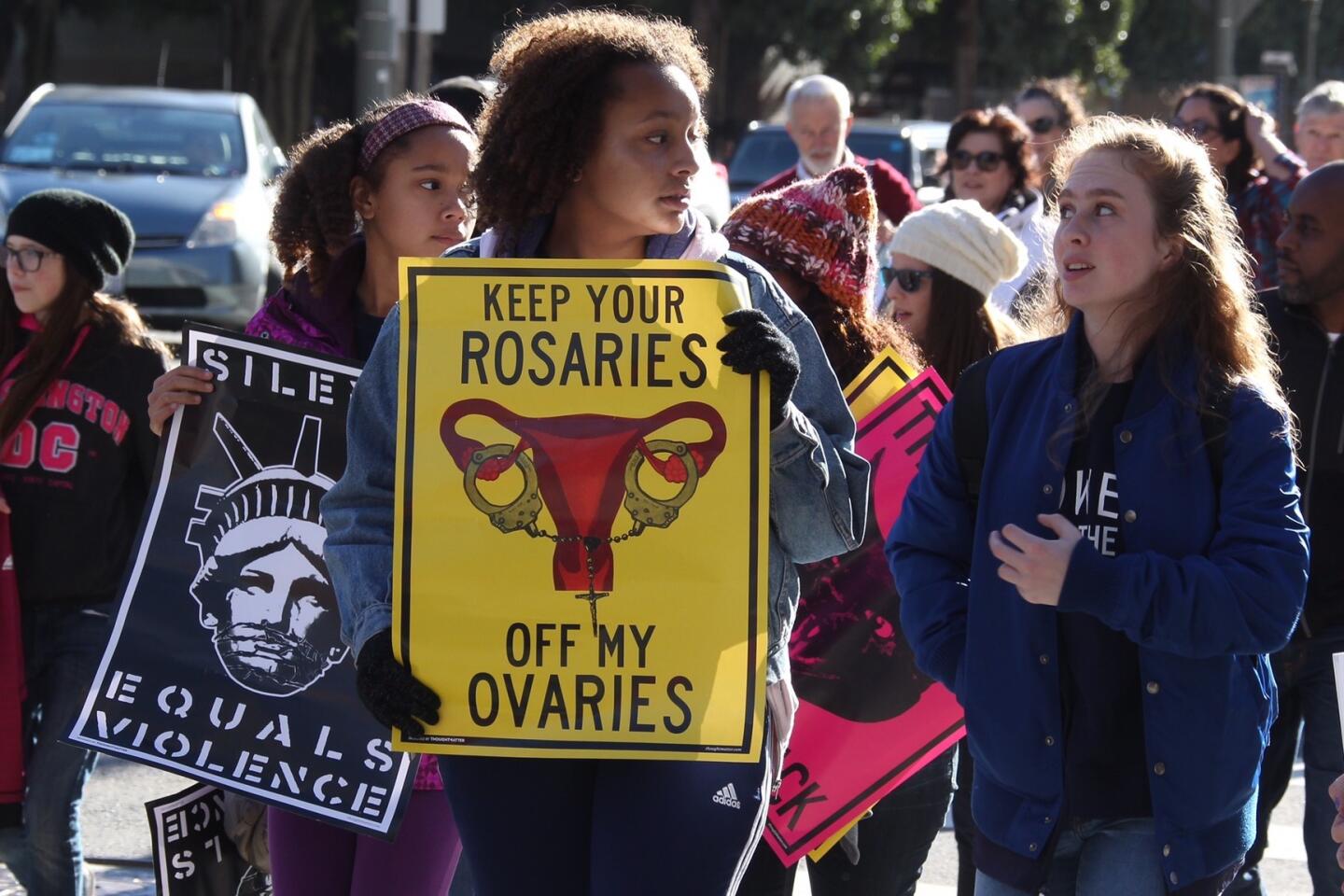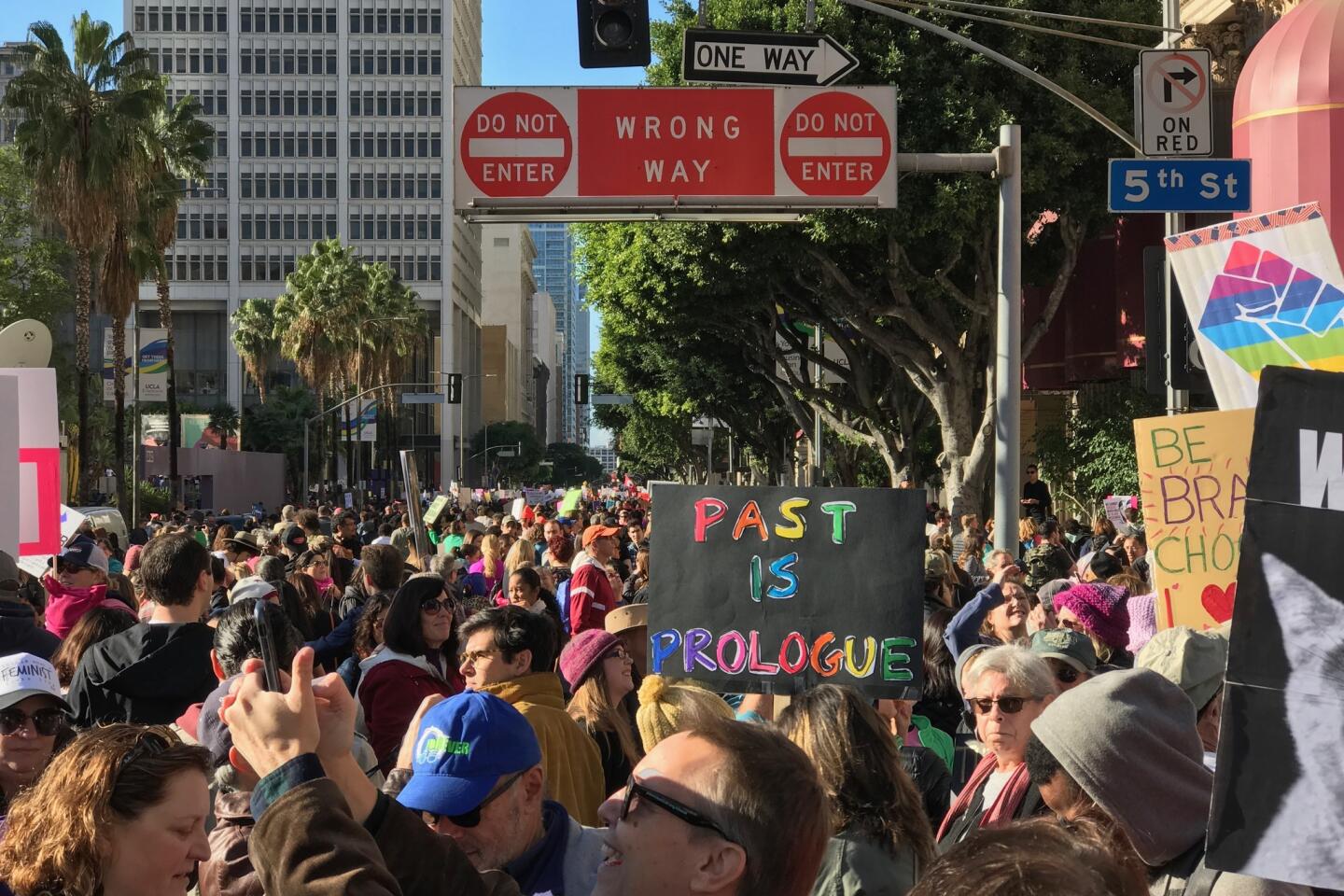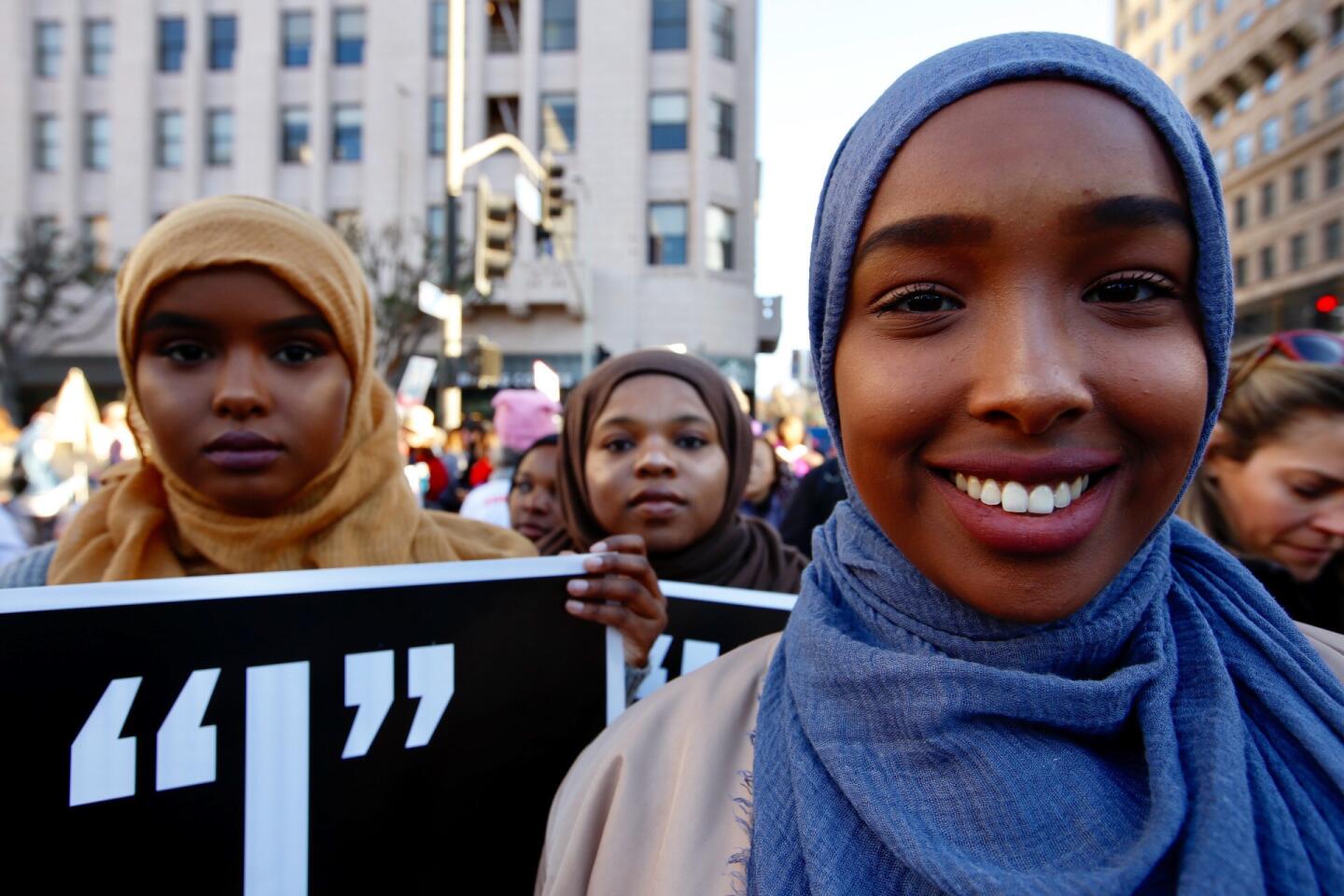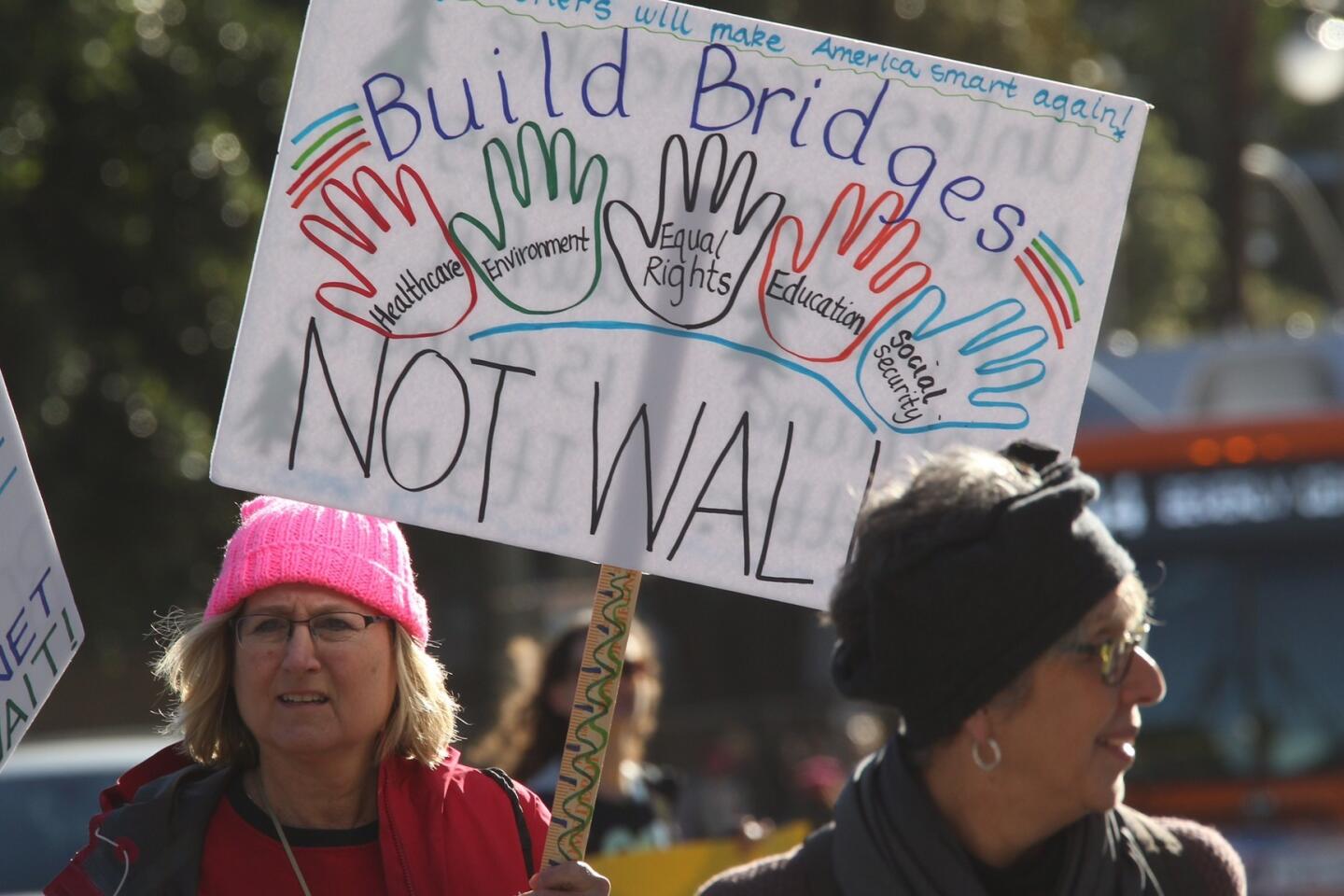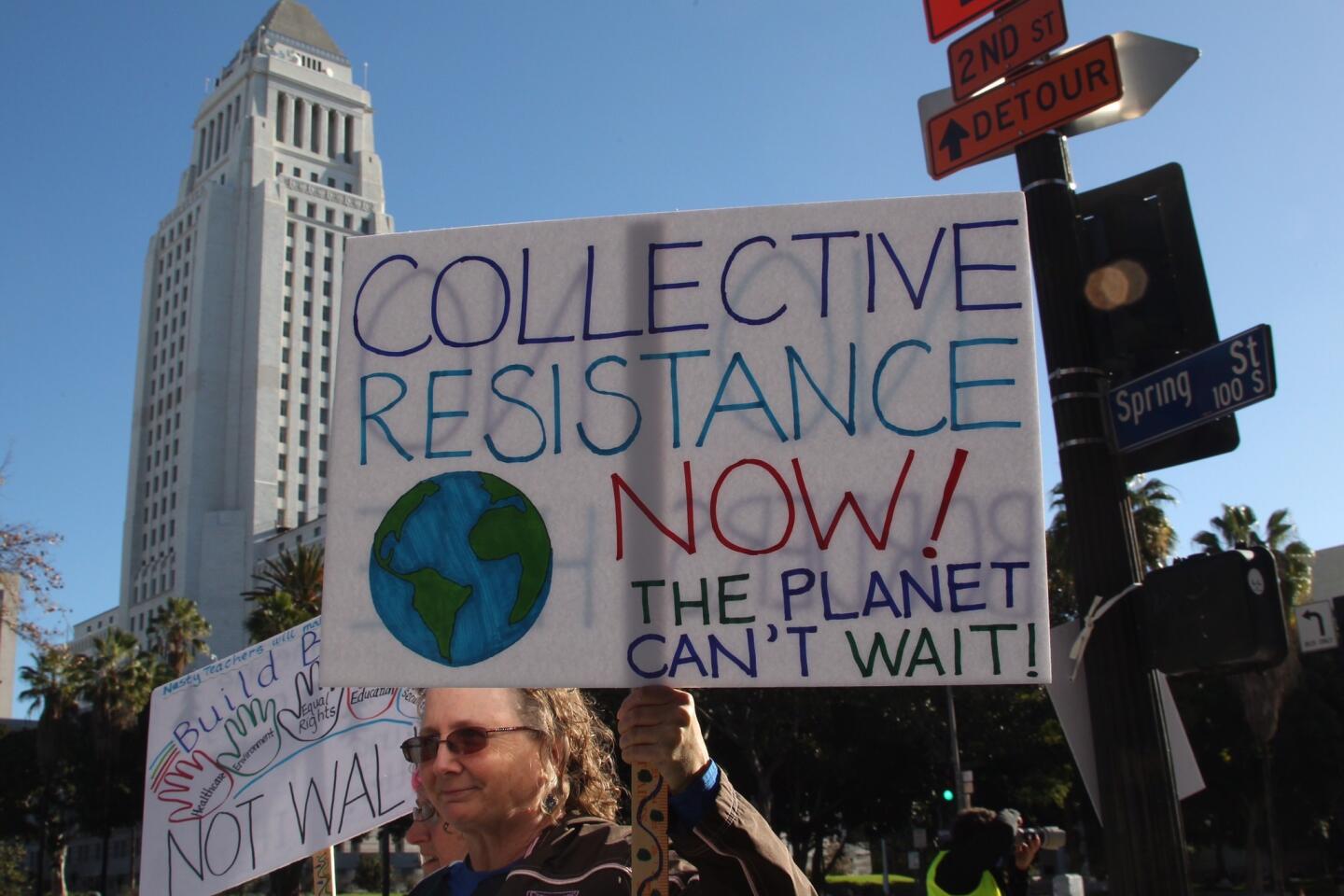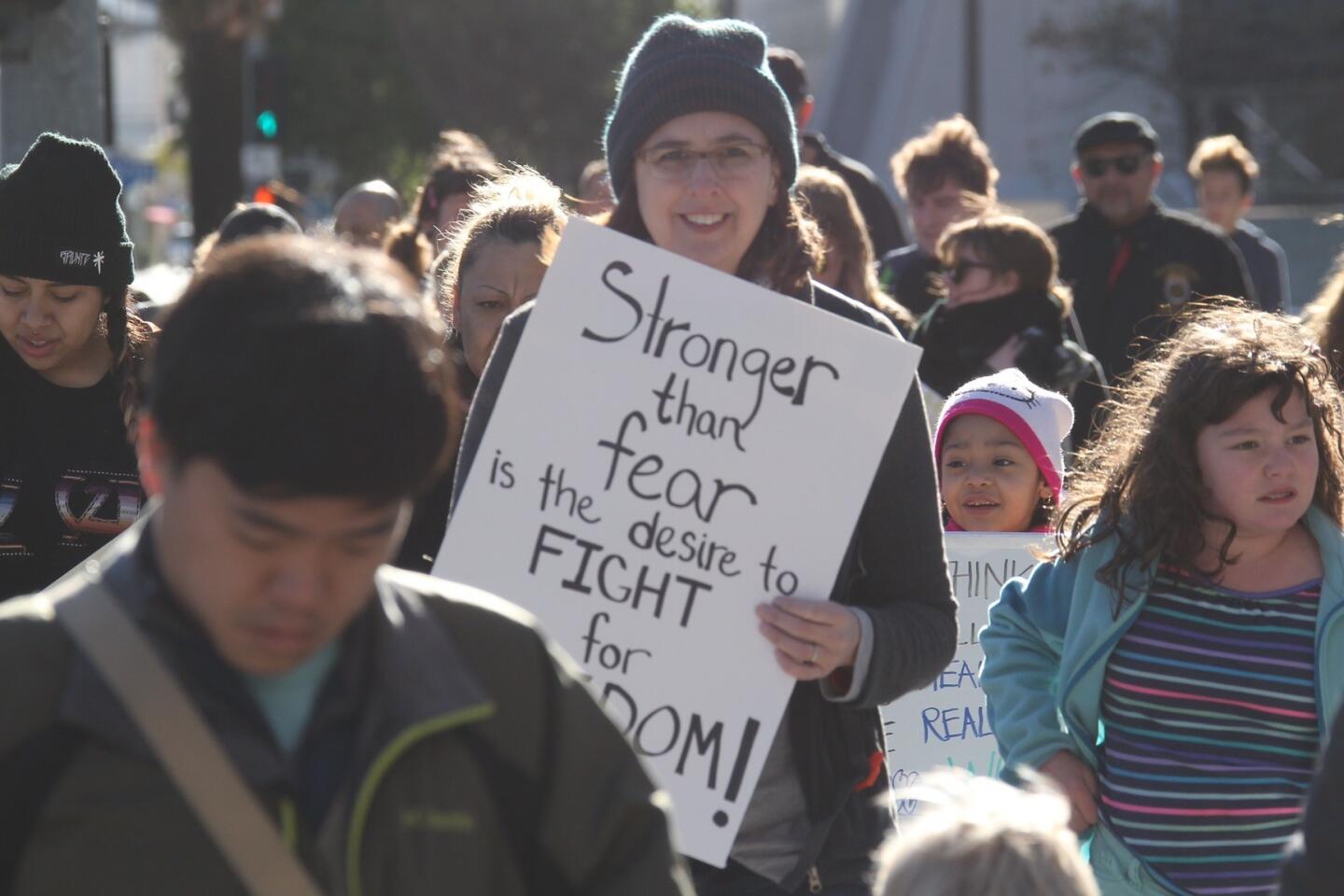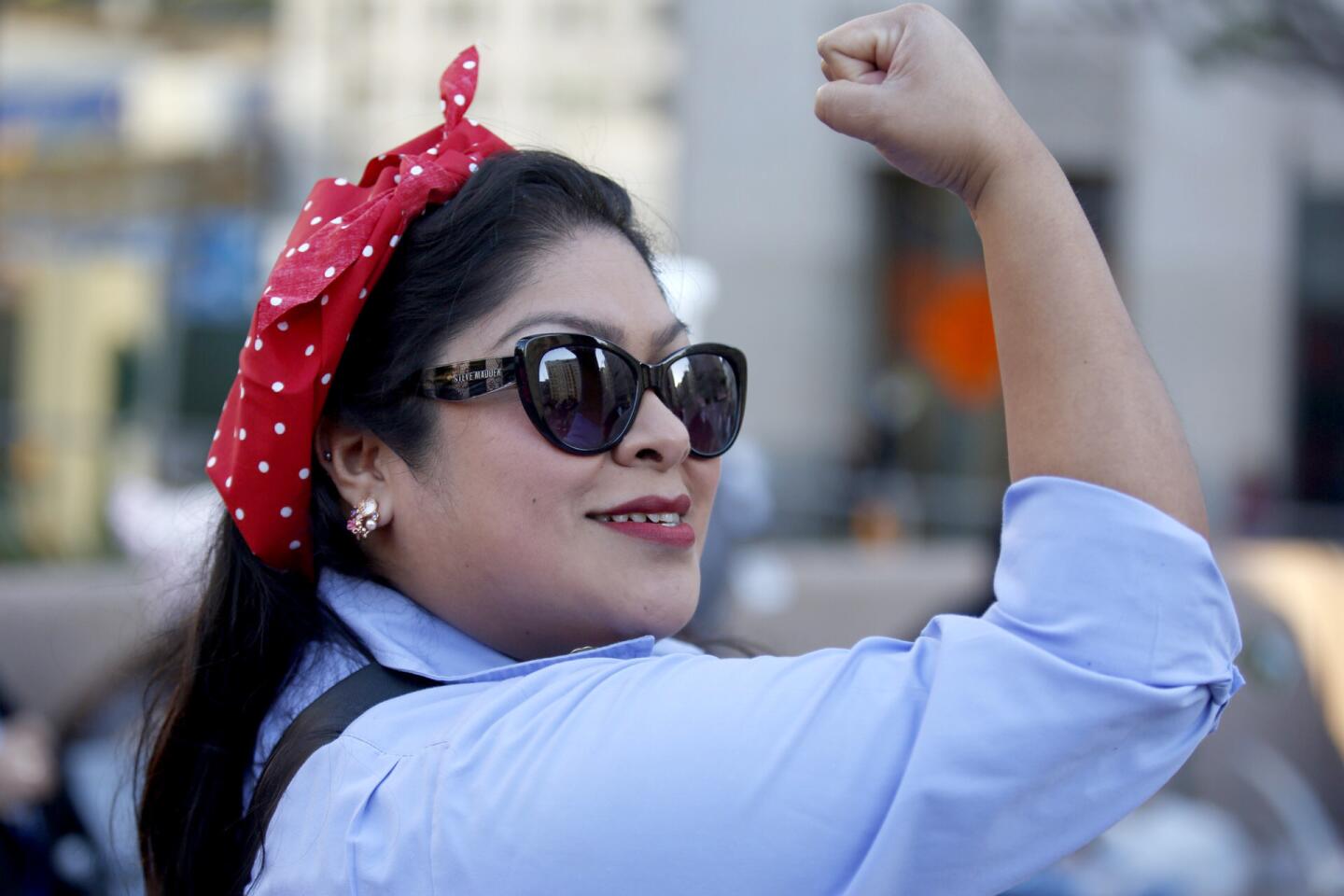Shaded pink, women’s protest fills the streets of downtown L.A.
- Share via
They came in cars, trains and buses. Others biked or hitchhiked.
A day after Donald J. Trump was sworn in as the 45th president, several hundred thousand people gathered in Los Angeles to protest in a historic women’s march. It was a peaceful and massive counter-inauguration movement, the first act of resistance to a conservative administration.
Beneath sunny skies, a group of women on motorcycles kicked off the march. Many protesters wore a symbol of feminism in the age of Trump: a bright pink, knitted “pussyhat.” Some carried their babies on their chests and pushed their grandmothers in wheelchairs. They chanted, waved signs and held hands; a few braved the cold and went shirtless.
“I’m not going to sit back and in 20 years have my grandchildren say, why didn’t I do something?” said Anna Vastano, 57.
The retired social worker expects “a revival of the ’60s” to unfold these next four years and she and her daughter, an aspiring lawyer, plan to be part of it.
Who started the march? One woman »
The protest, organized after the election, went global, with demonstrations in more than 50 countries, from Germany to Norway: it even reached the Isle of Eigg, a tiny island off the coast of Scotland, population 88. In the nation’s capital, the numbers at the Women’s March on Washington appeared to overshadow those at Trump’s inauguration.
In Los Angeles, families and friends flooded downtown streets, from Pershing Square to City Hall — including men supporting their daughters, wives, mothers and sisters. Officials estimated this to be the largest protest in more than a decade.
“There’s a sea of humanity everywhere,” said Los Angeles Police Department Capt. Andrew Neiman,
Hopeful and anxious, demonstrators felt uplifted by the gathering of so many like-minded people.
Dean Heezen, 26, of Canada, was in town for work and decided to join the march — in a pair of heels.
“It’s women’s rights,” he said. “How could you not march for that?”
As he held a sign that read, “Walk a mile in her shoes” one woman told him: “Power to you for walking in heels.”
“Power to you for wearing them,” he answered.
The roster of speakers included big names such as Barbra Streisand, Natalie Portman and Miley Cyrus. At a stage near Grand Park, city leaders, including Mayor Eric Garcetti, took turns motivating the crowd.
“It doesn’t matter who is at the top,” he told onlookers. “It matters what we do at the bottom.”
The exact size of the protest was difficult to measure. Organizers put the number at 750,000.
The Los Angeles Police Department said in a statement that “well past” 100,000 people attended but did not provide a more precise number. Officials said it appeared to be the largest demonstration since a massive 2006 immigration march downtown. The LAPD estimated that march drew 500,000.
No arrests or major injuries were reported during the march, officials said.
Some people went to great lengths to get to the protest. Trains were jammed and wait times at some stations exceeded two hours.

Heather Huntington takes her 3-year-old son Ethan to the Los Angeles women’s march.
The Grashaw family, consisting of three cousins and a mother, gave up waiting for the North Hollywood Red Line. They tried hailing an Uber, but the app kept canceling on them.
So Ashley Grashaw, 32, stuck out her thumb on the side of the road until a stranger pulled over. They paid him $75 to drive them downtown.
“I told him, ‘Run the yellow lights if you have to!’” Grashaw said.
The Westlake Village resident said she’s felt angry and helpless since the election. She hopes Trump is affected by the aerial shots of the huge marches nationwide.
“This is our voice,” Grashaw said. “It’s our way of telling him, ‘Please pay attention to us. Please listen to us.’”
Some demonstrators had not taken part in a protest in decades. That included 70-year-old Judy Lamb of Mission Viejo.
She said Trump’s win reignited her political side. She showed up at the protest in a T-shirt reading “NMP” (Not My President) with a blond swoop over the P representing the president’s signature mane.
“I’m here to support women’s rights and immigrants’ rights and to tell him we’re not going to be silent,” said Lamb, who came with two sisters to the event.
Like the crowd, the messages displayed during the protest were vast and diverse. Handmade signs went from somber (“I didn’t flee my war-torn country for this”) to funny (So bad. Even introverts are here.”) to fed up (“UGH”).
People used the moment to fight for women, to defend the environment, to lobby for immigrants, Muslims, gays and the disabled — all believed to be vulnerable under the new president.
For many, it was a day filled with highs — and uncertainty.
Like many, Robin Shephard was worried about the future. The Cheviot Hills homemaker considers “Making America Great Again” code for taking the country back to a more racially segregated past.
“We’re not going to go back to that,” she said. “This is the last gasp of people who aren’t ready to move forward.”
Some protesters were already thinking of ways to take action beyond the march. That included donating to groups such as Planned Parenthood, writing to political leaders and volunteering time at civil rights organizations.
Gabriela Macias said her four-year plan included lots of coffee and lots of resistance.
“Hopefully, not forever,” she said with a laugh.
She plans to network with people fighting different causes and to occasionally talk to Trump supporters to better understand their views.
Macias worries that some of her friends who lack legal status could lose their jobs, so she’s begun to look for a bigger home to potentially offer them housing.
Among the protesters was roughly 100 alumnae of the Seven Sisters, a group of historic women’s colleges on the East Coast, including Bryn Mawr, Smith and Wellesley.
They marched in unison to promote women’s rights, said Annie Wright, 52. The Vietnamese refugee came to this country in 1975 and now lives in Orange County.
Wright and many of the women saw the march as a continuation of the solidarity they experienced during their college days.
This was a new starting point.
“Nothing will be accomplished,” she said, “if we don’t continue.”
Times staff writers Richard Winton and Christine Zhang contributed to this story.
ALSO
Protesters gather by the thousands at Orange County women’s marches
While Donald Trump danced, Shepard Fairey debuted his ‘American Civics’
More to Read
Sign up for Essential California
The most important California stories and recommendations in your inbox every morning.
You may occasionally receive promotional content from the Los Angeles Times.
